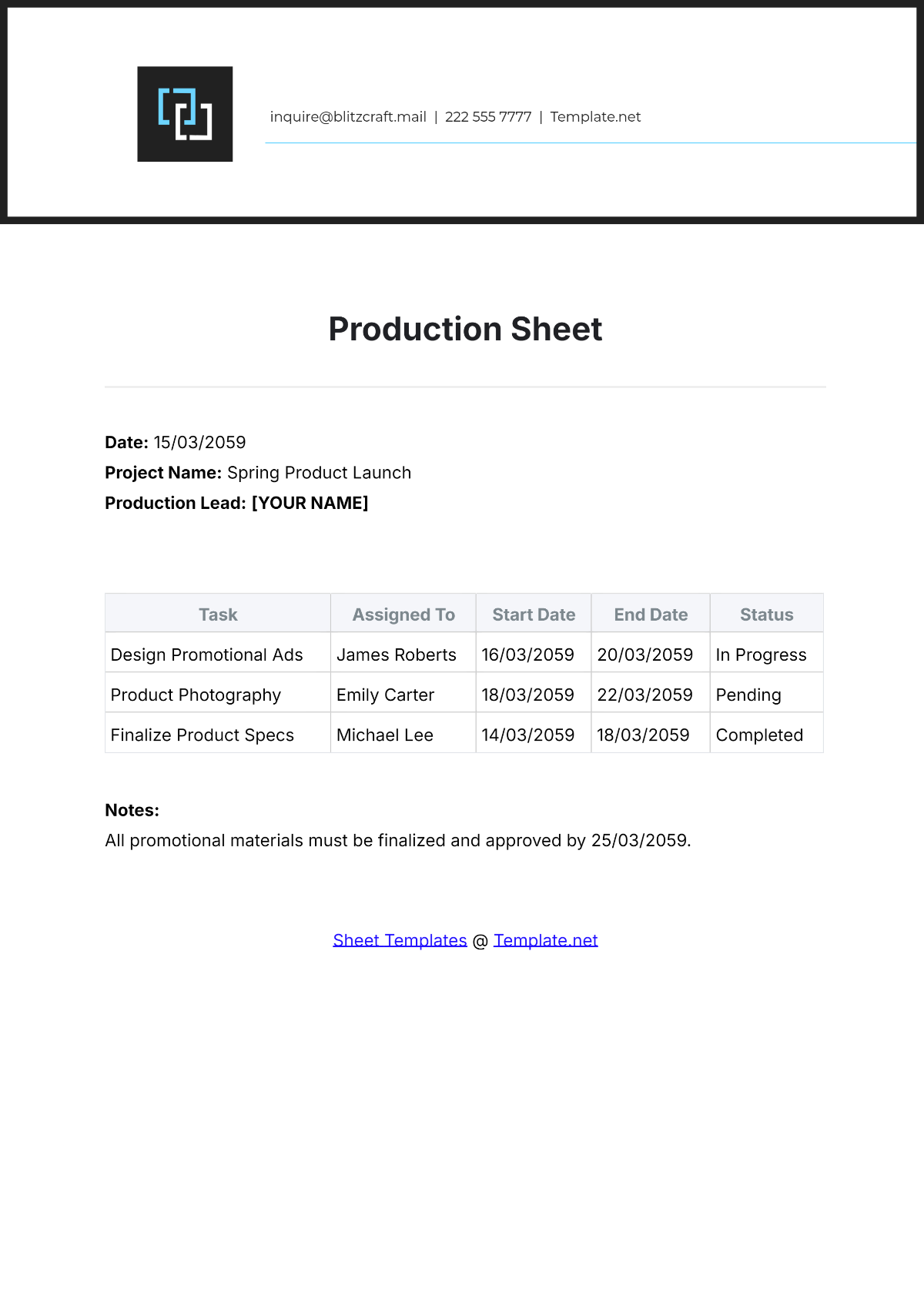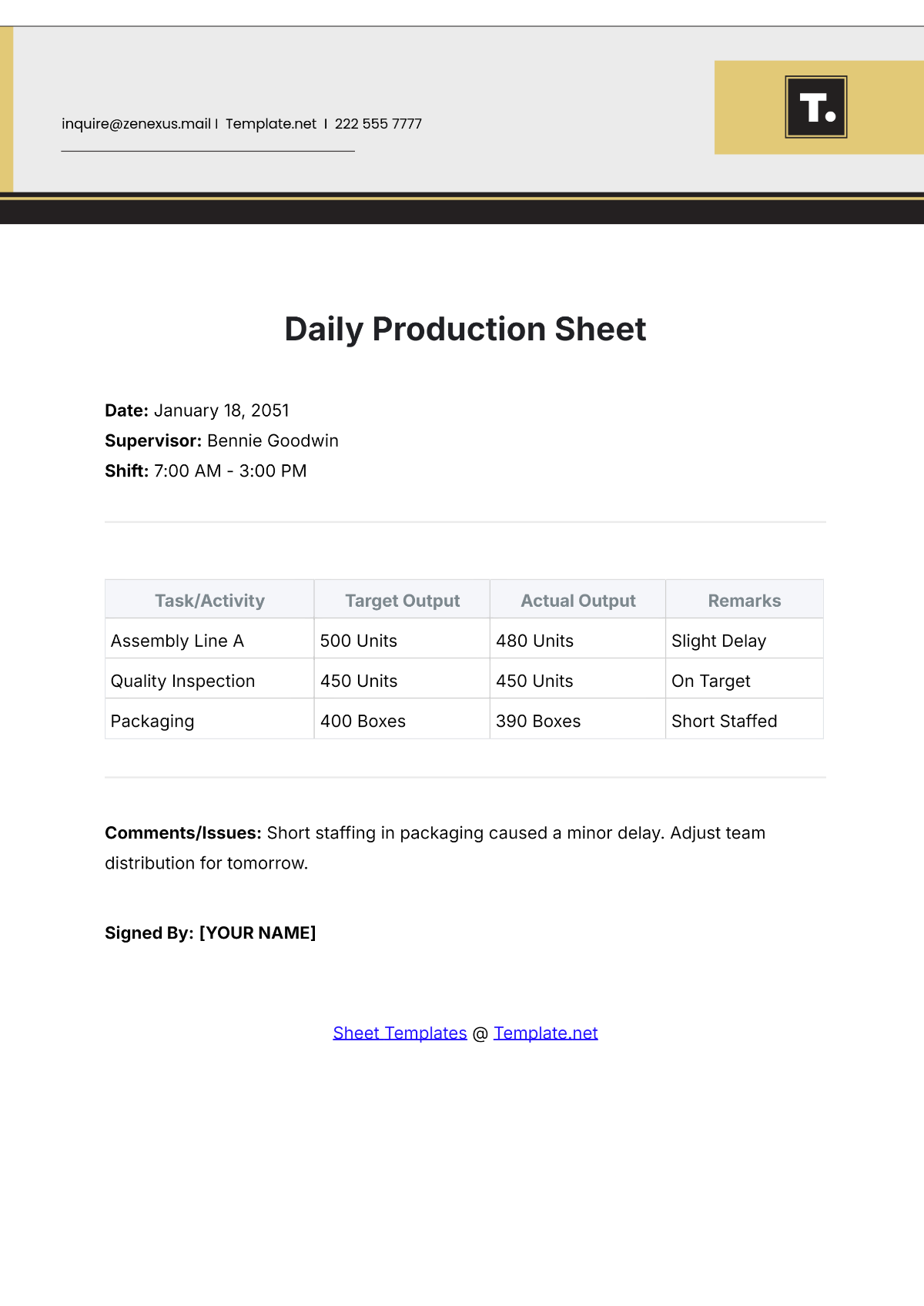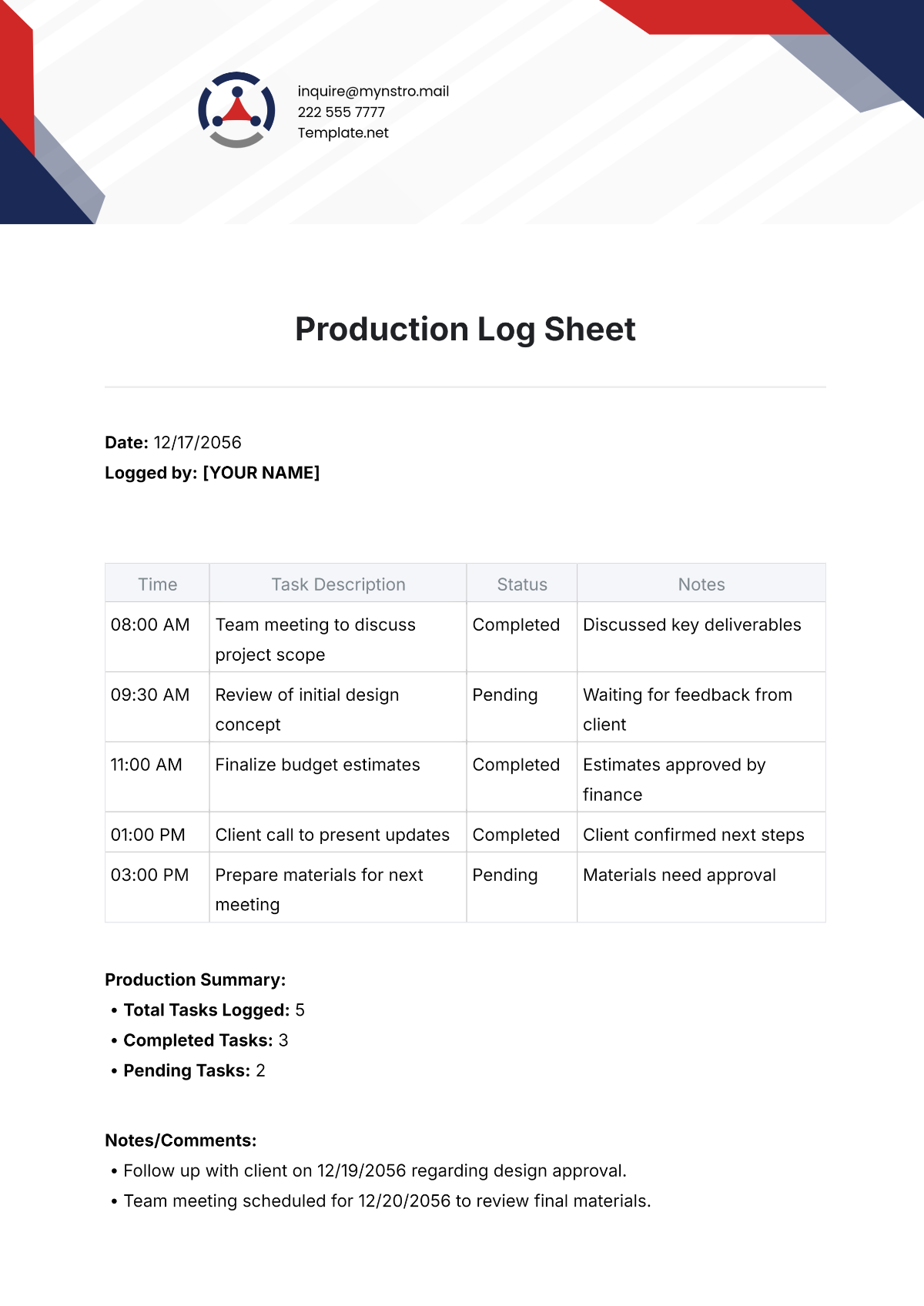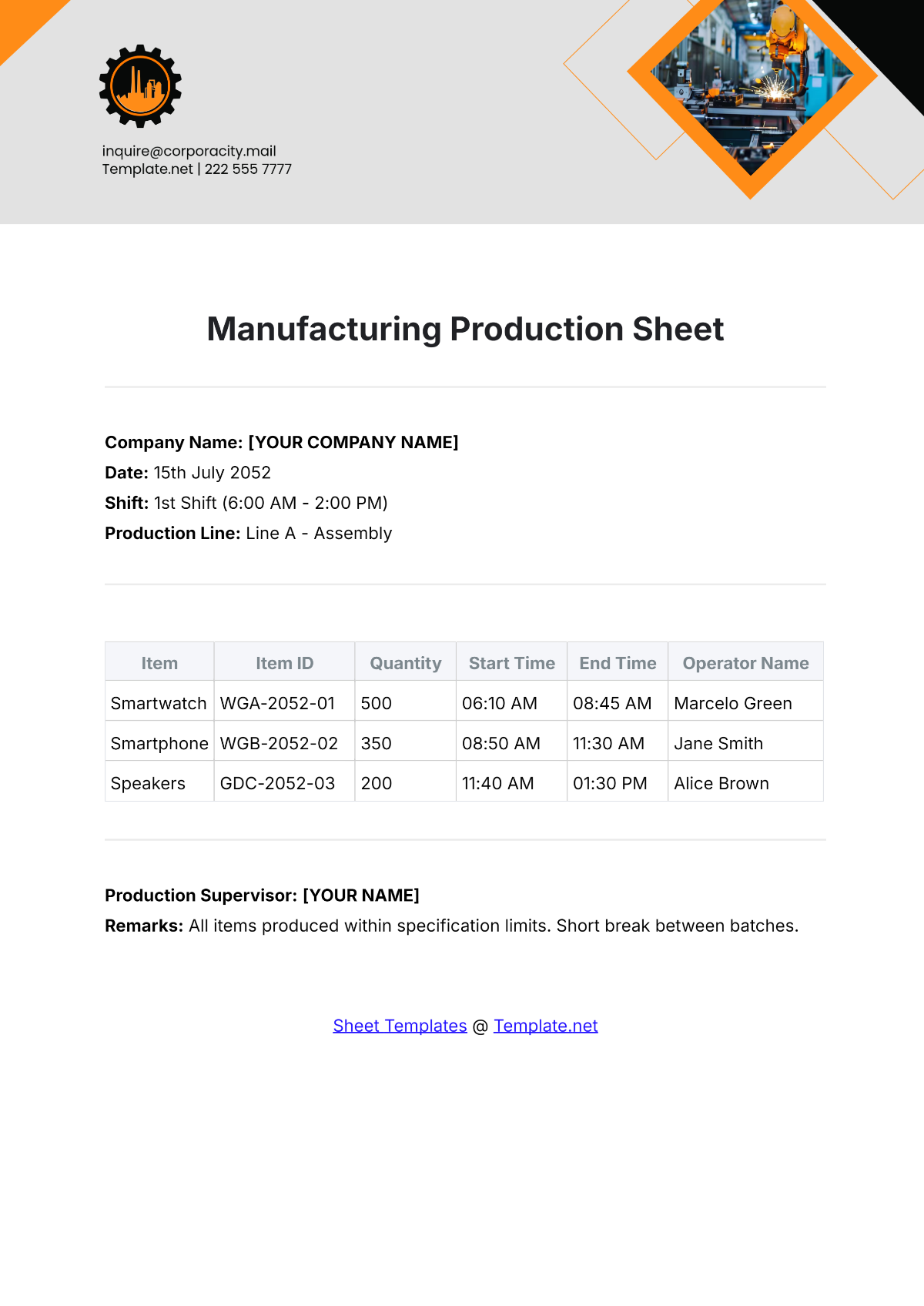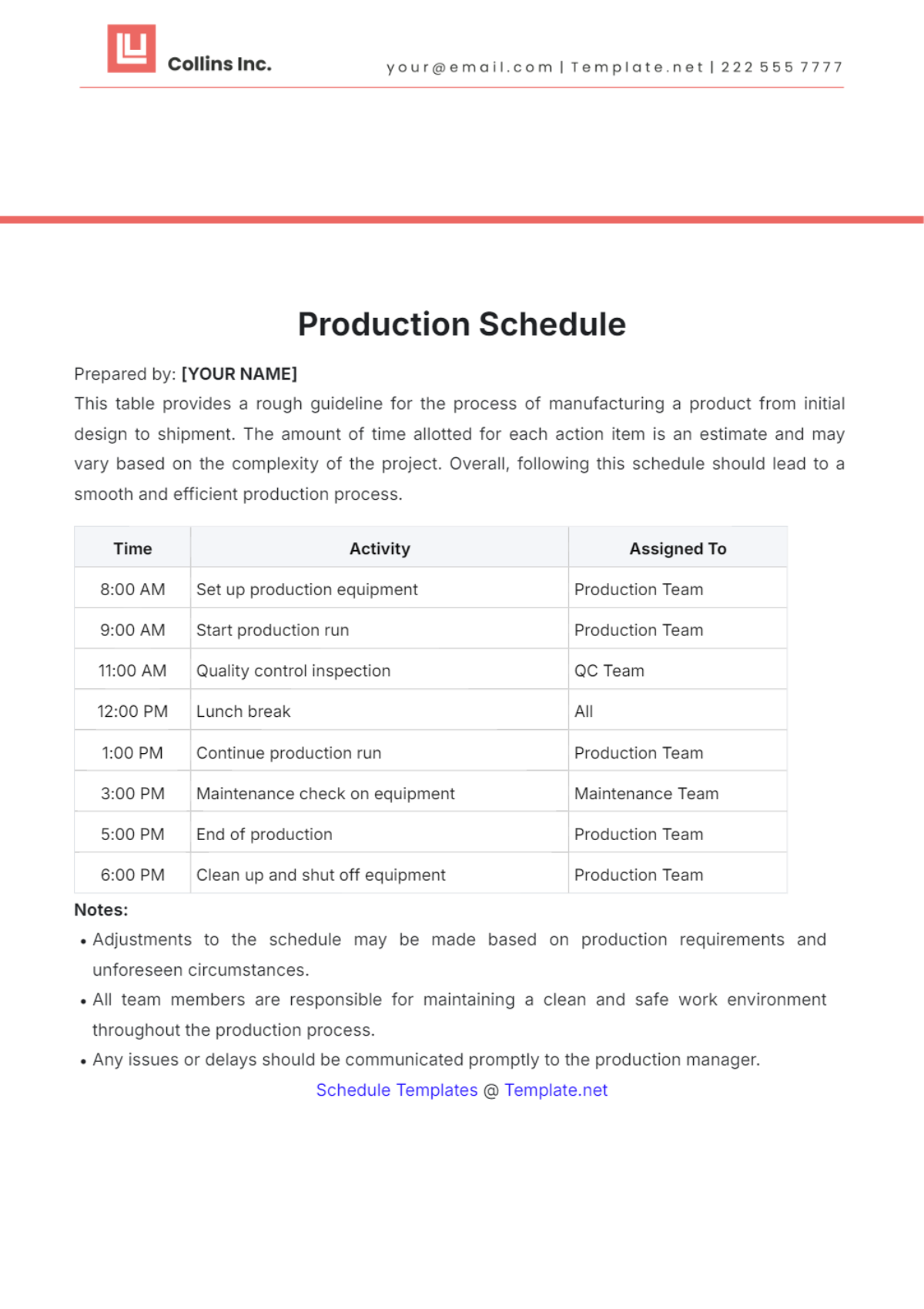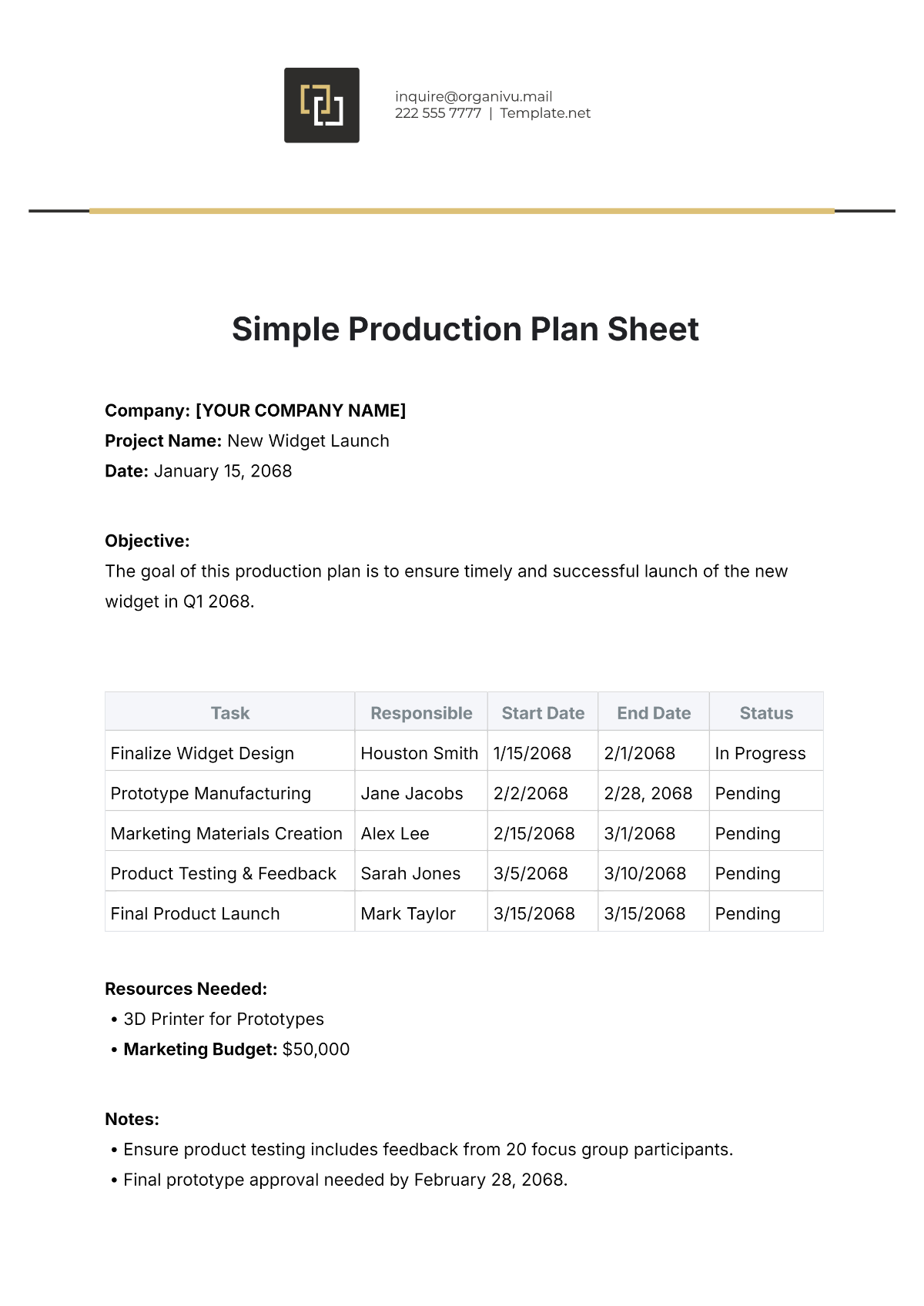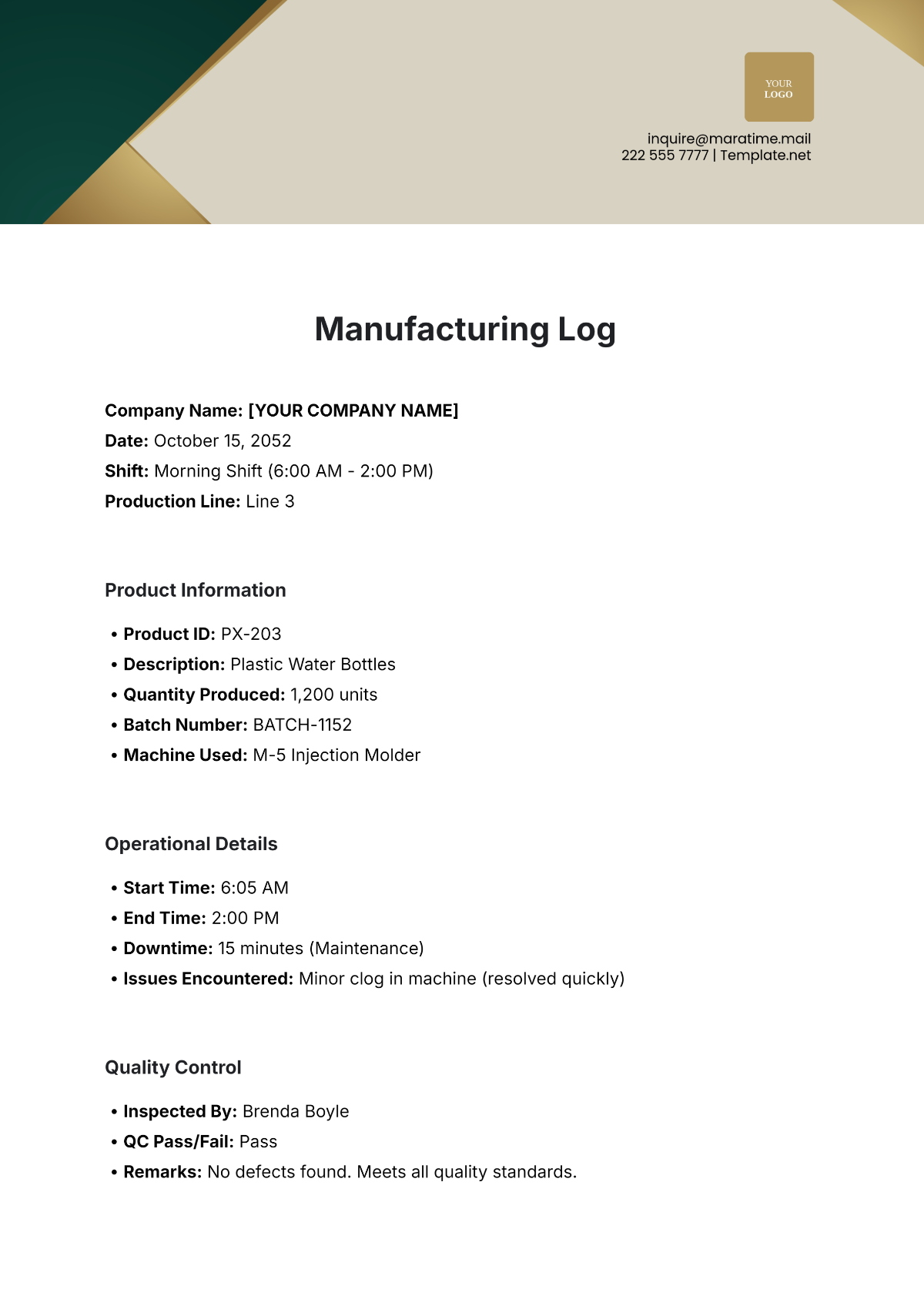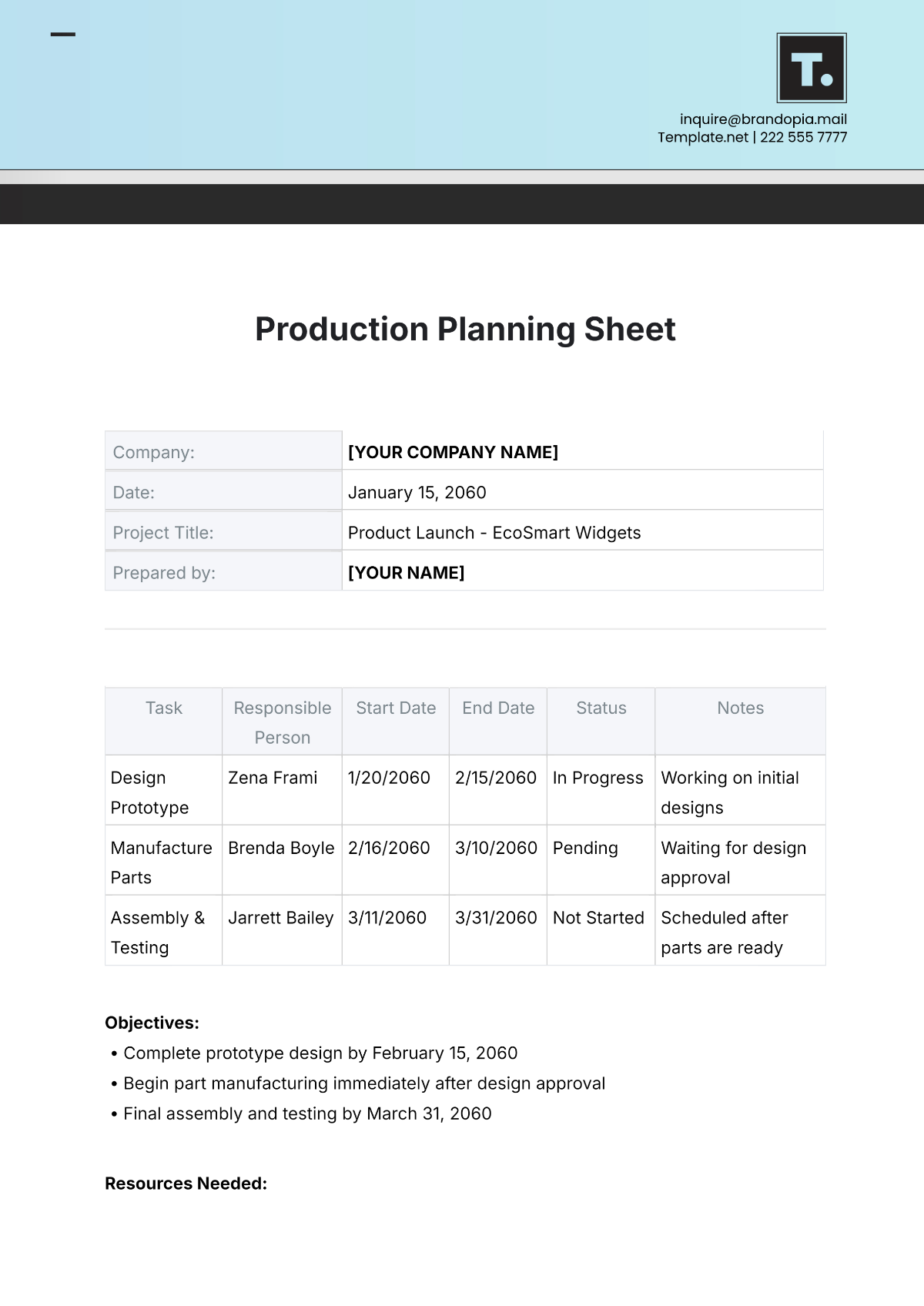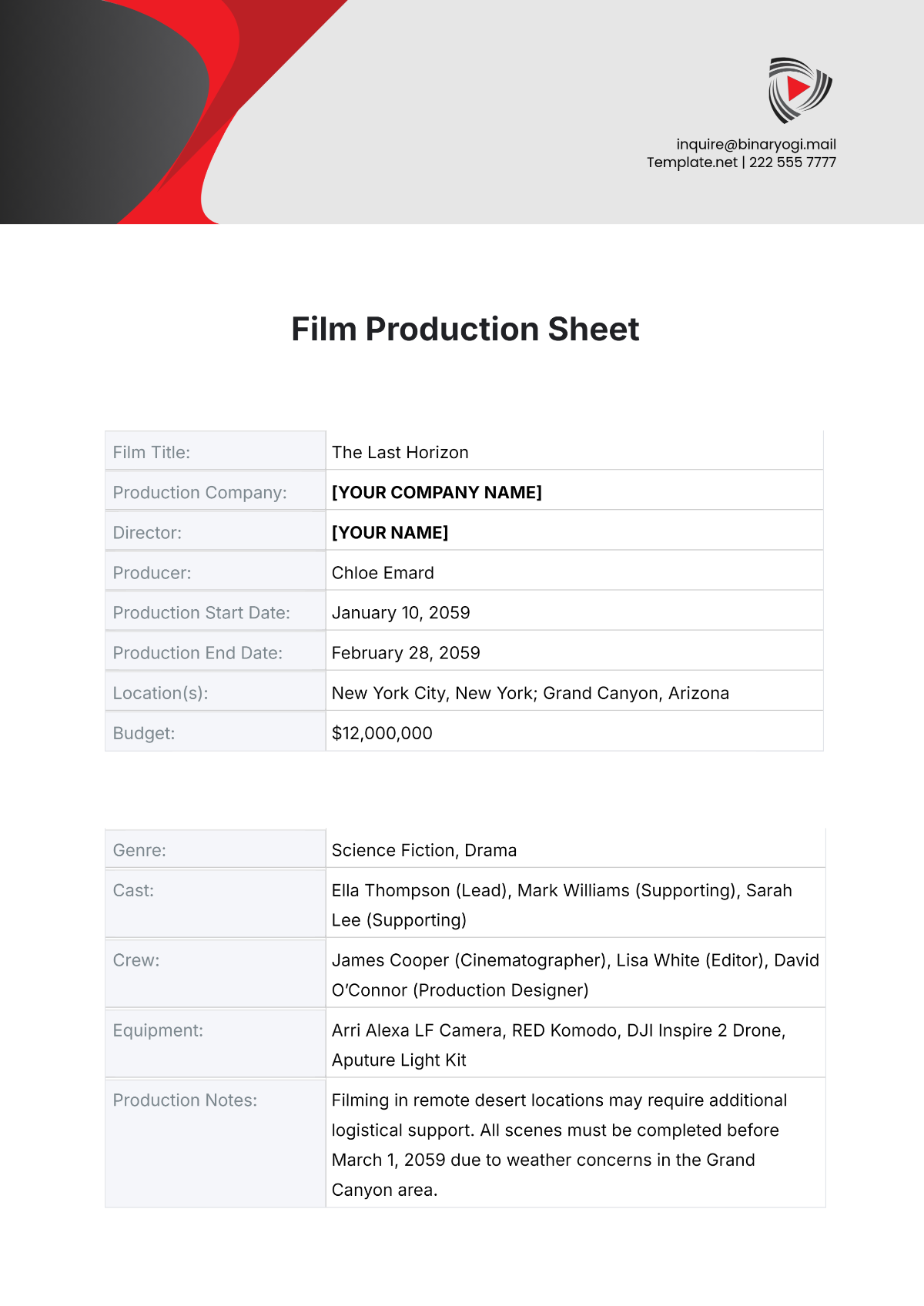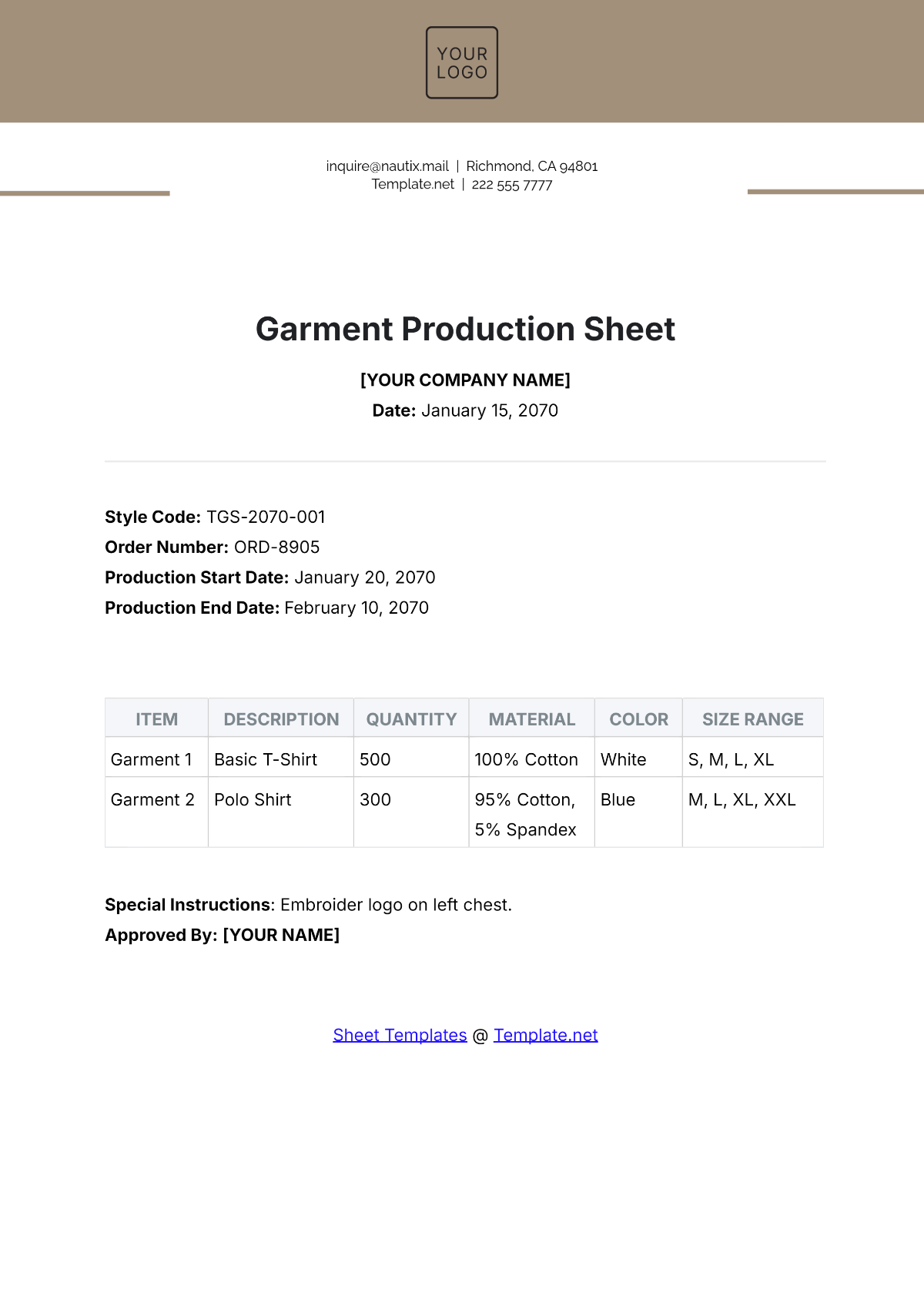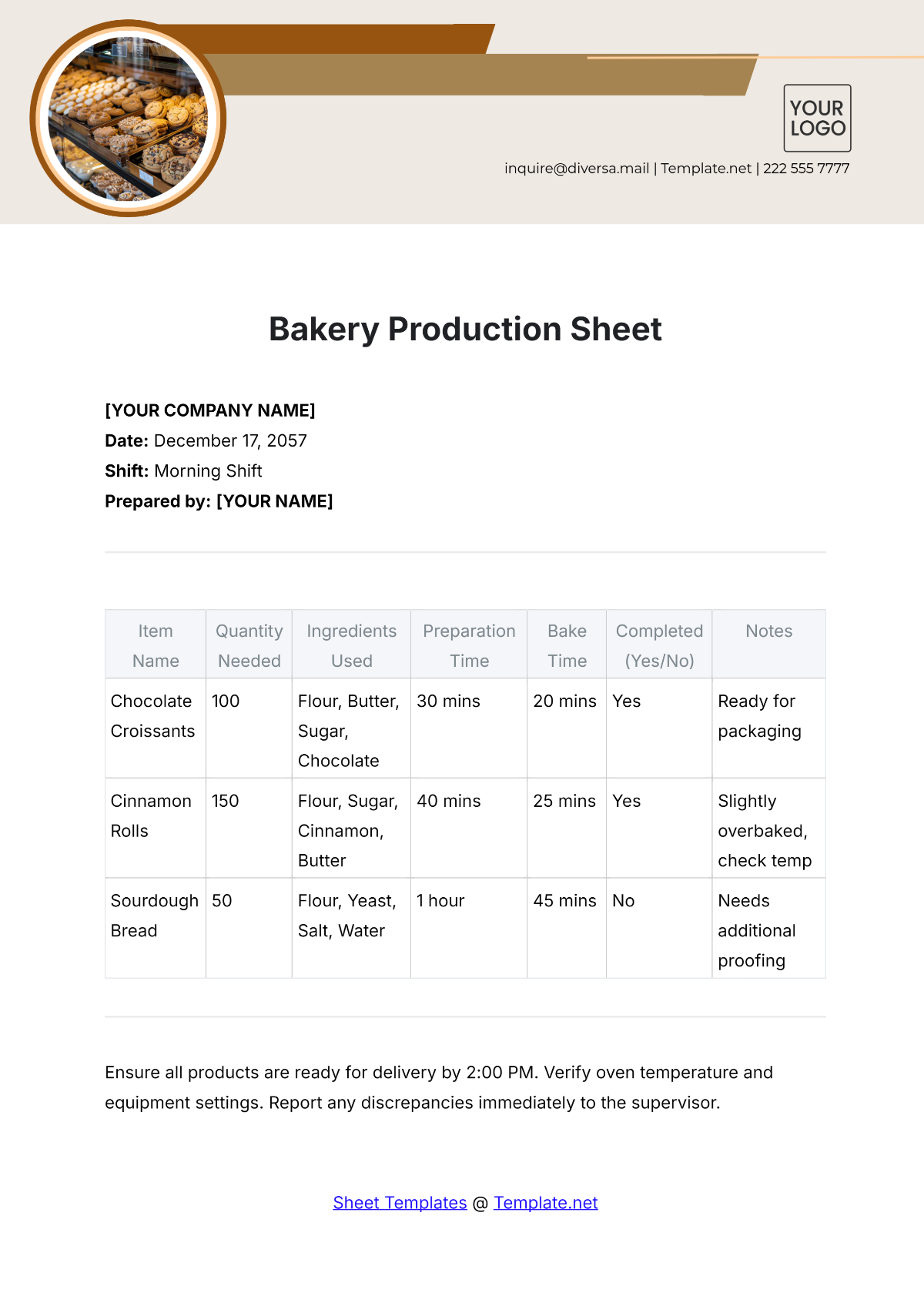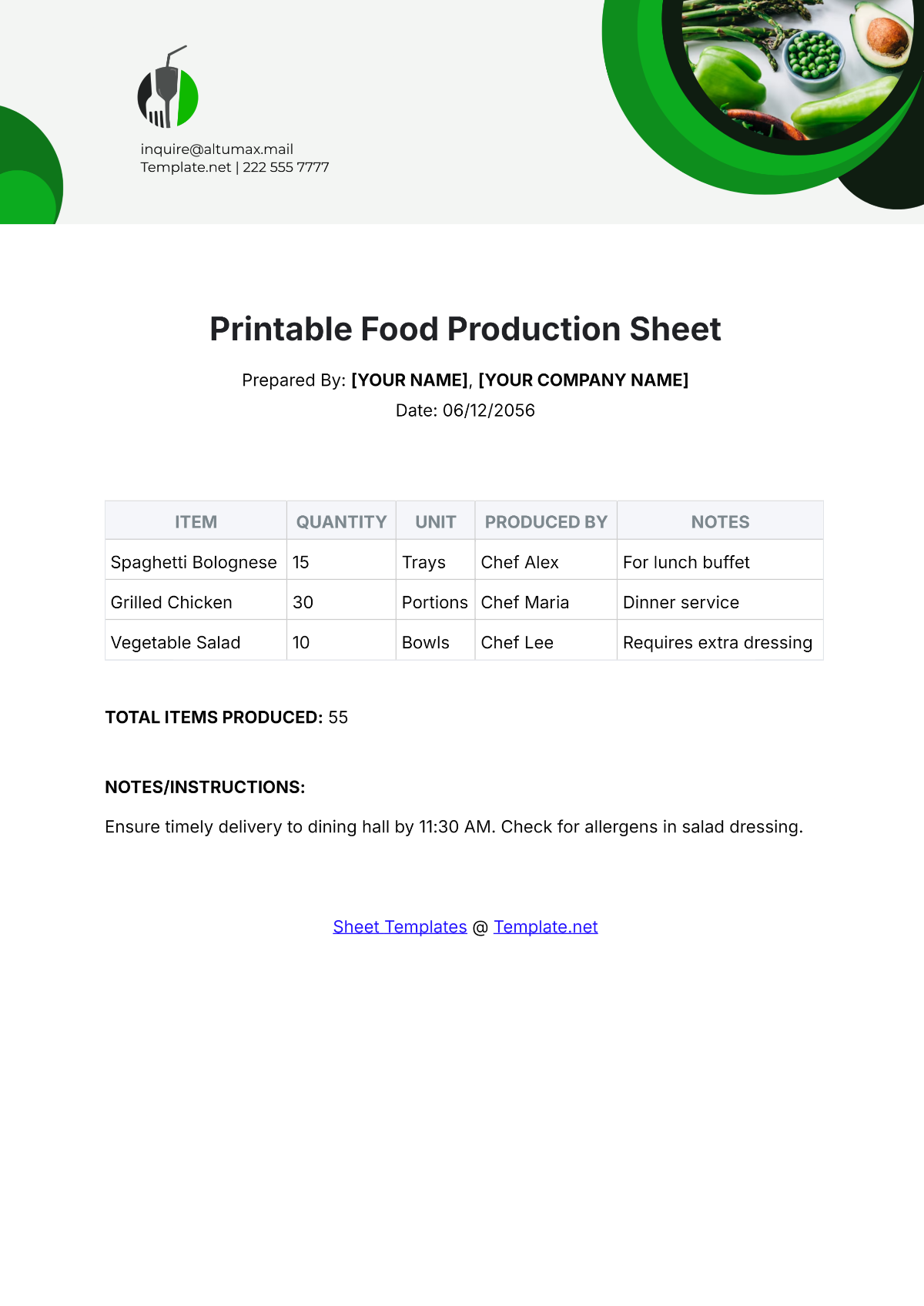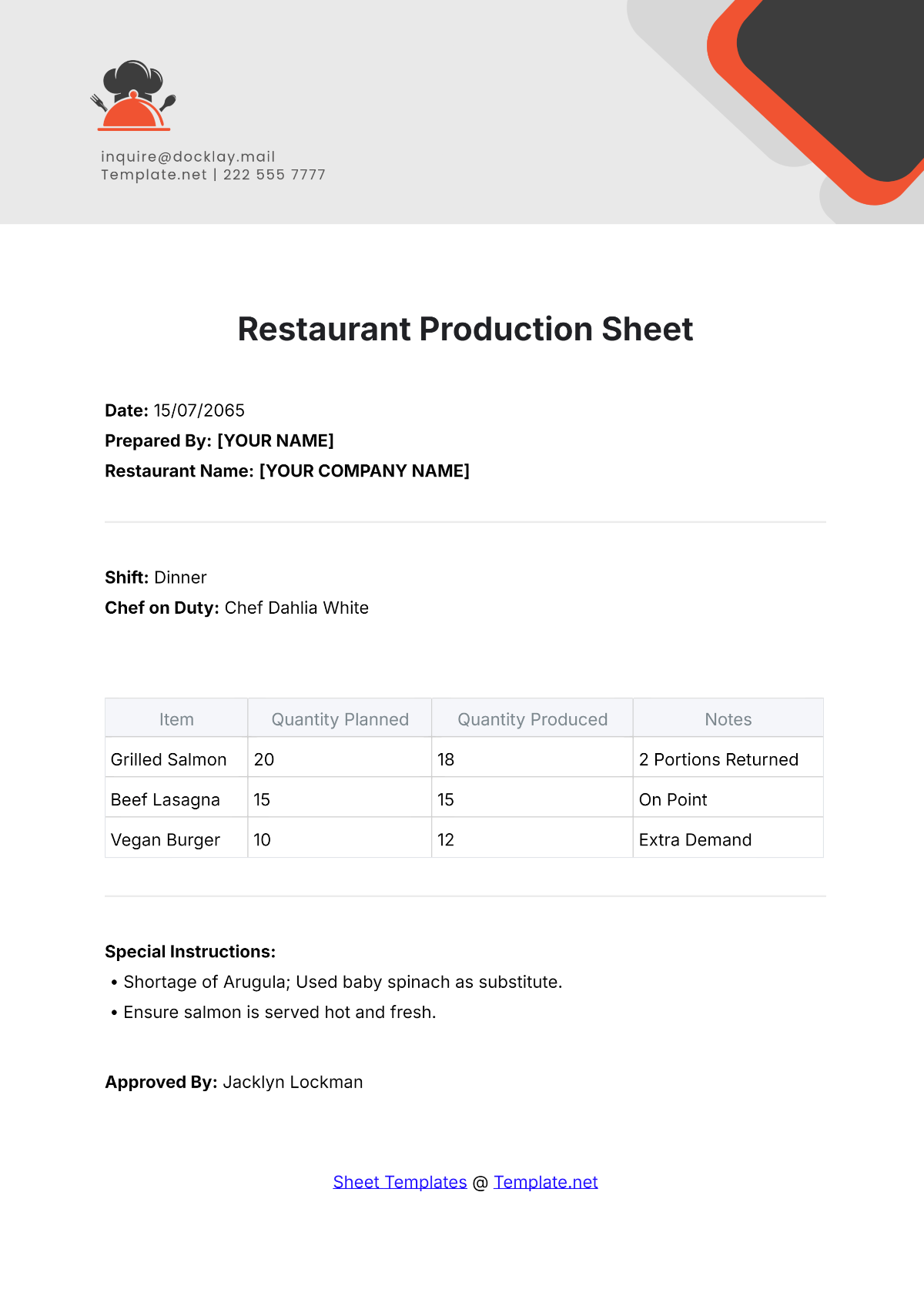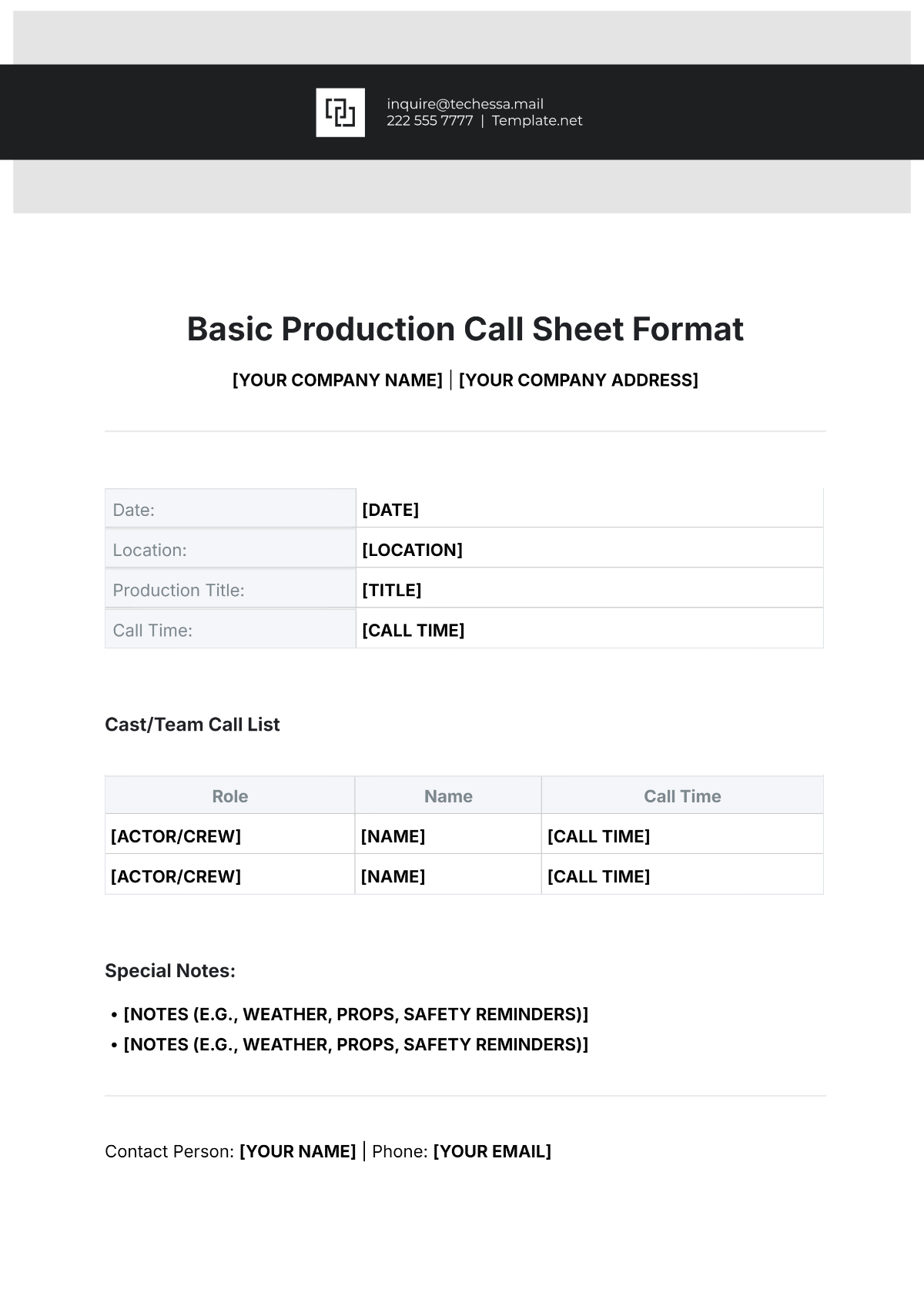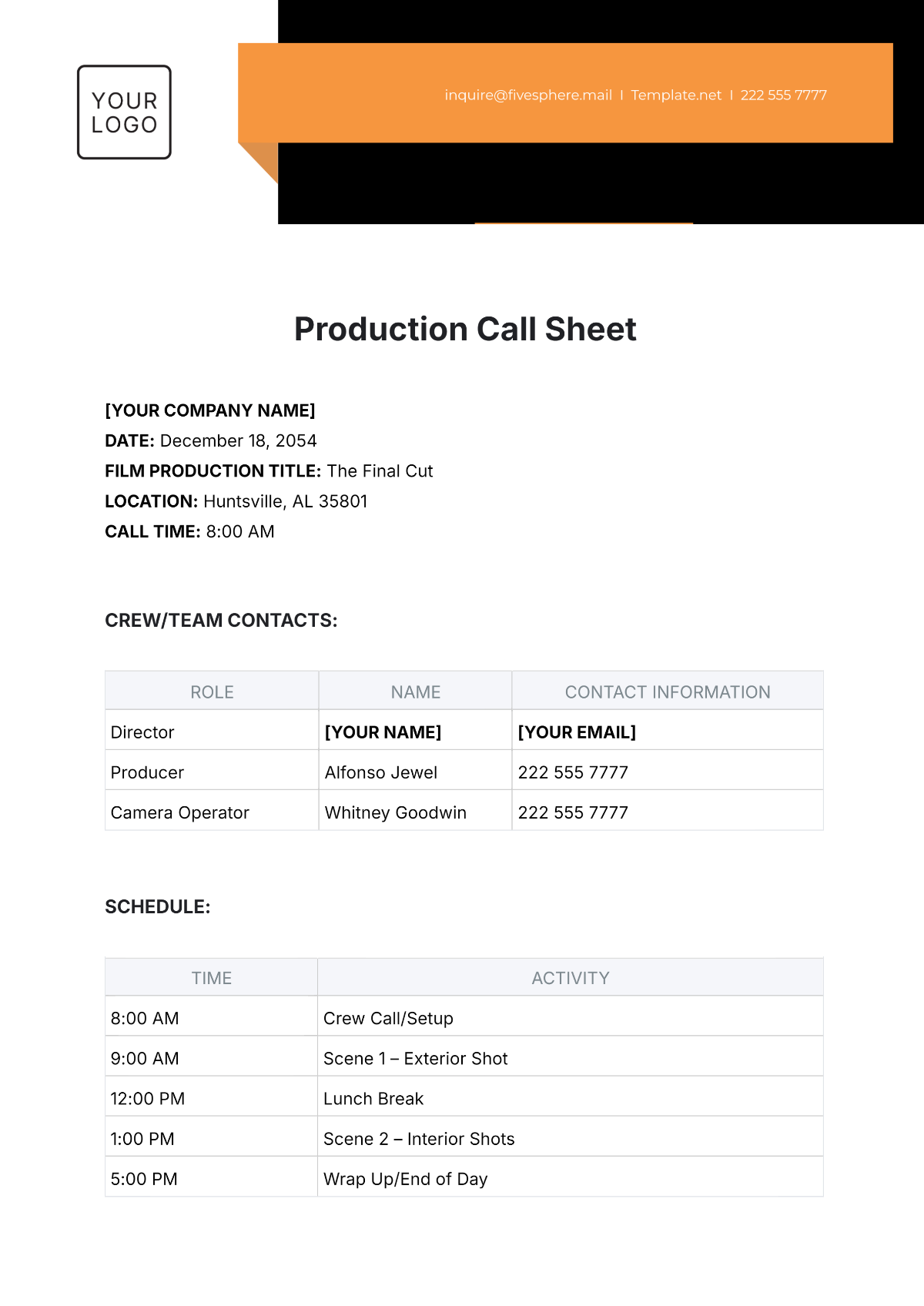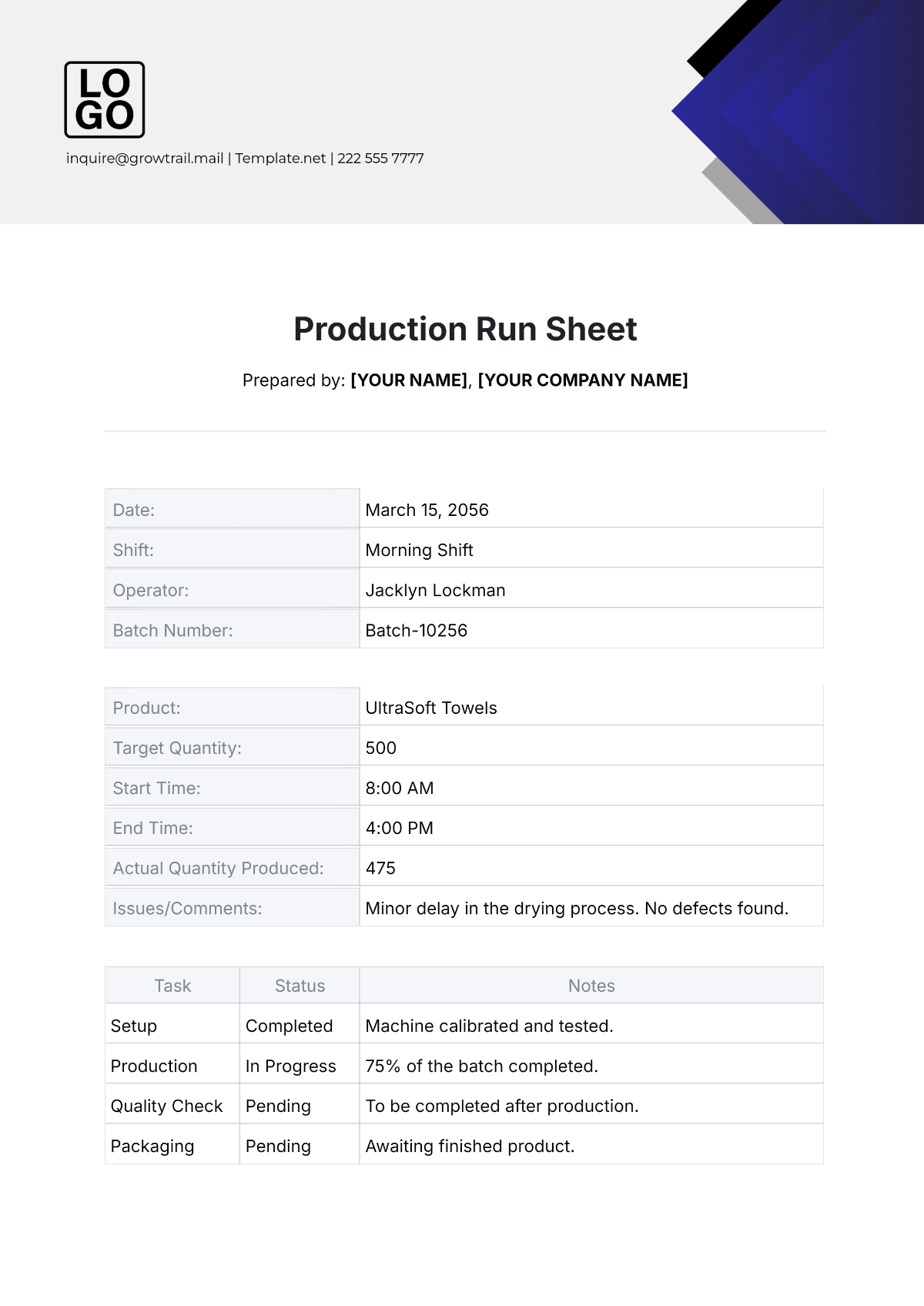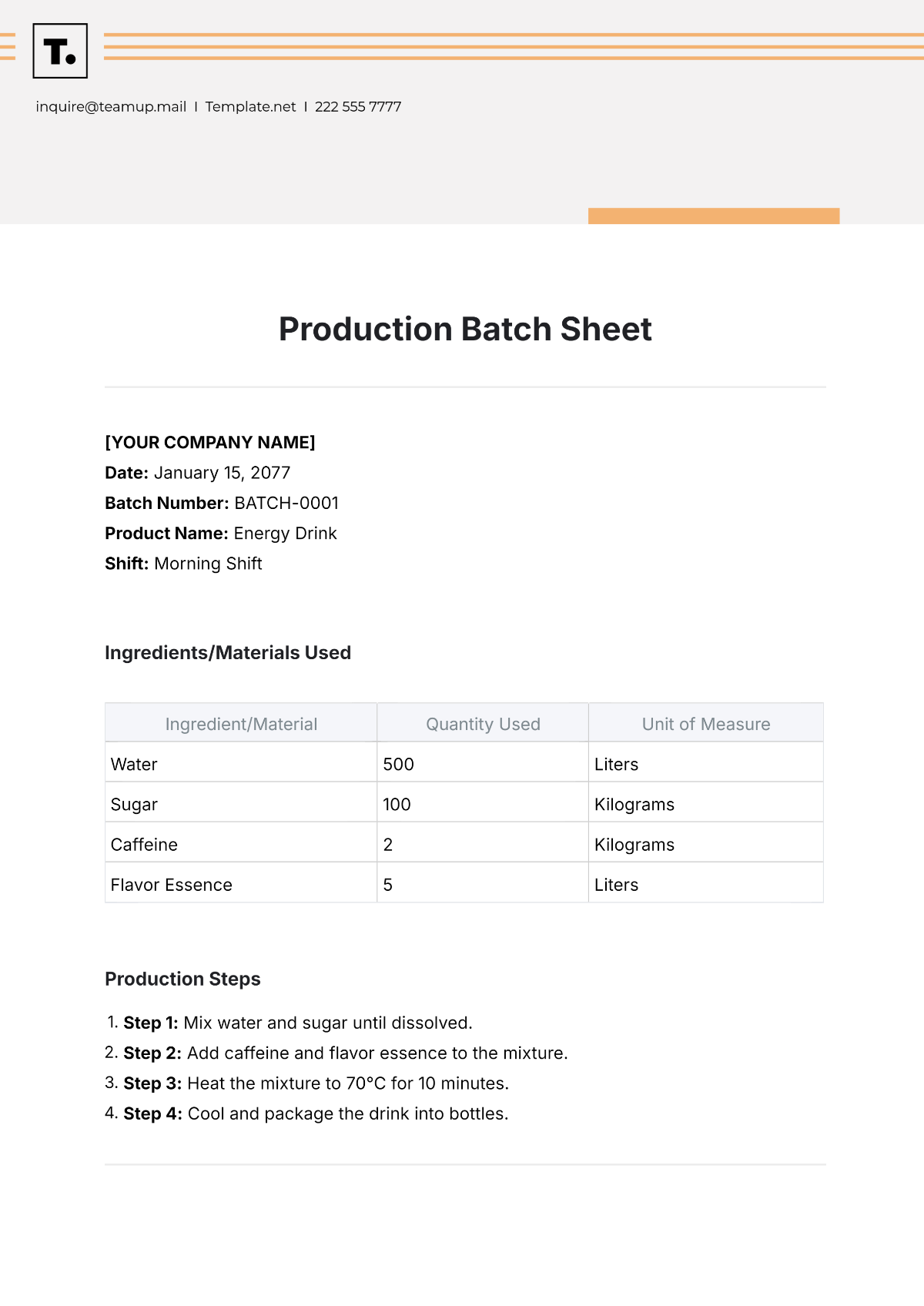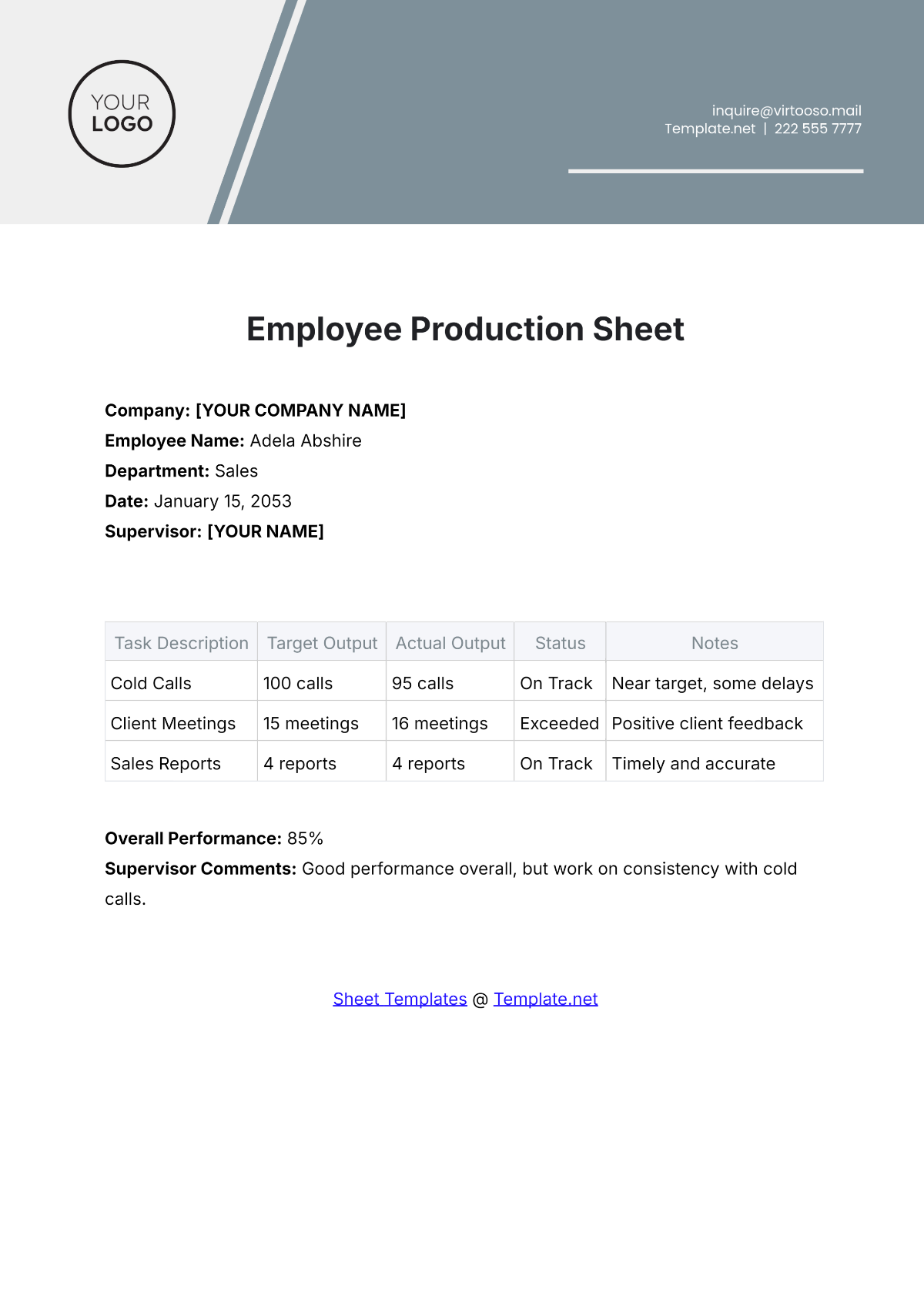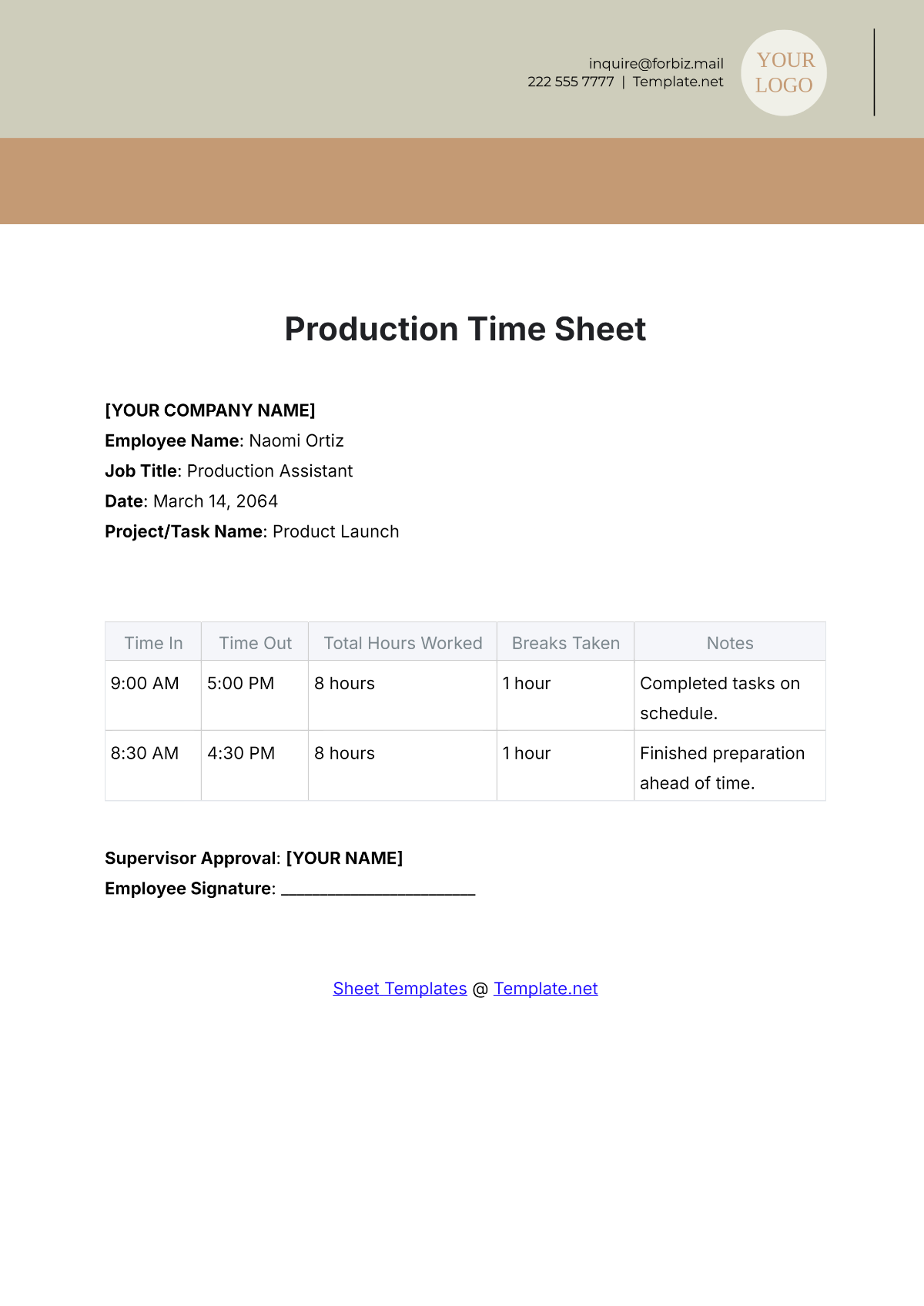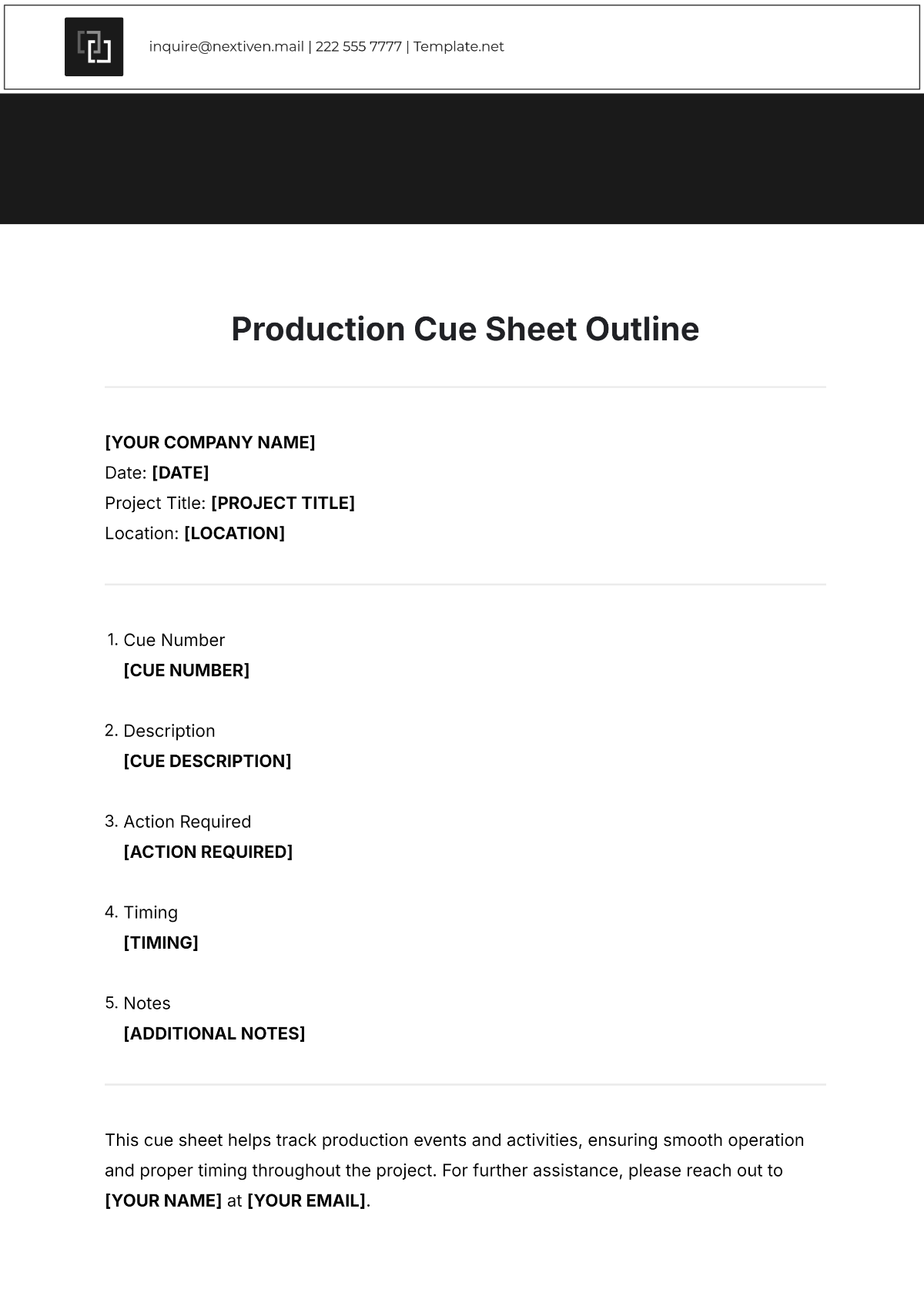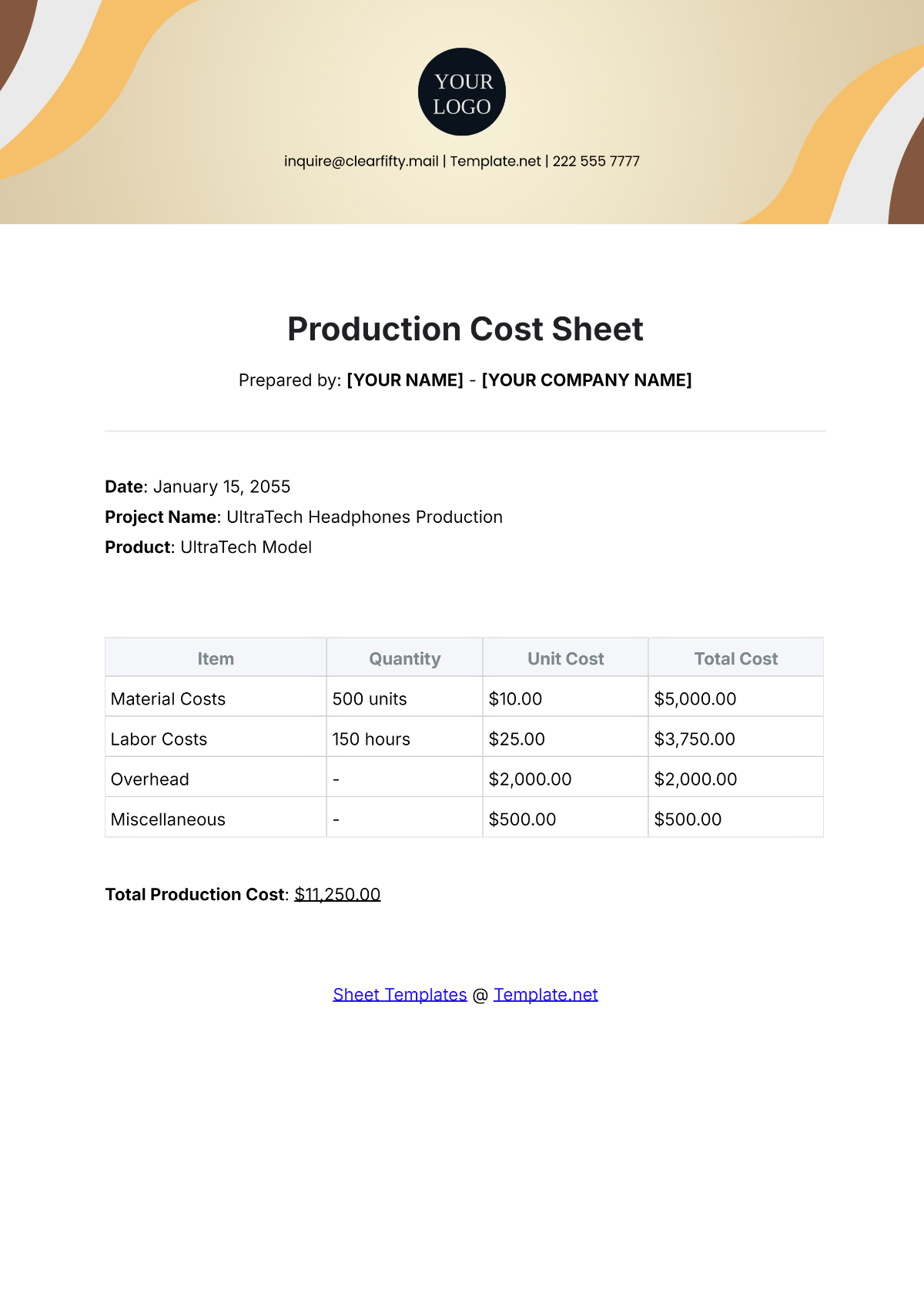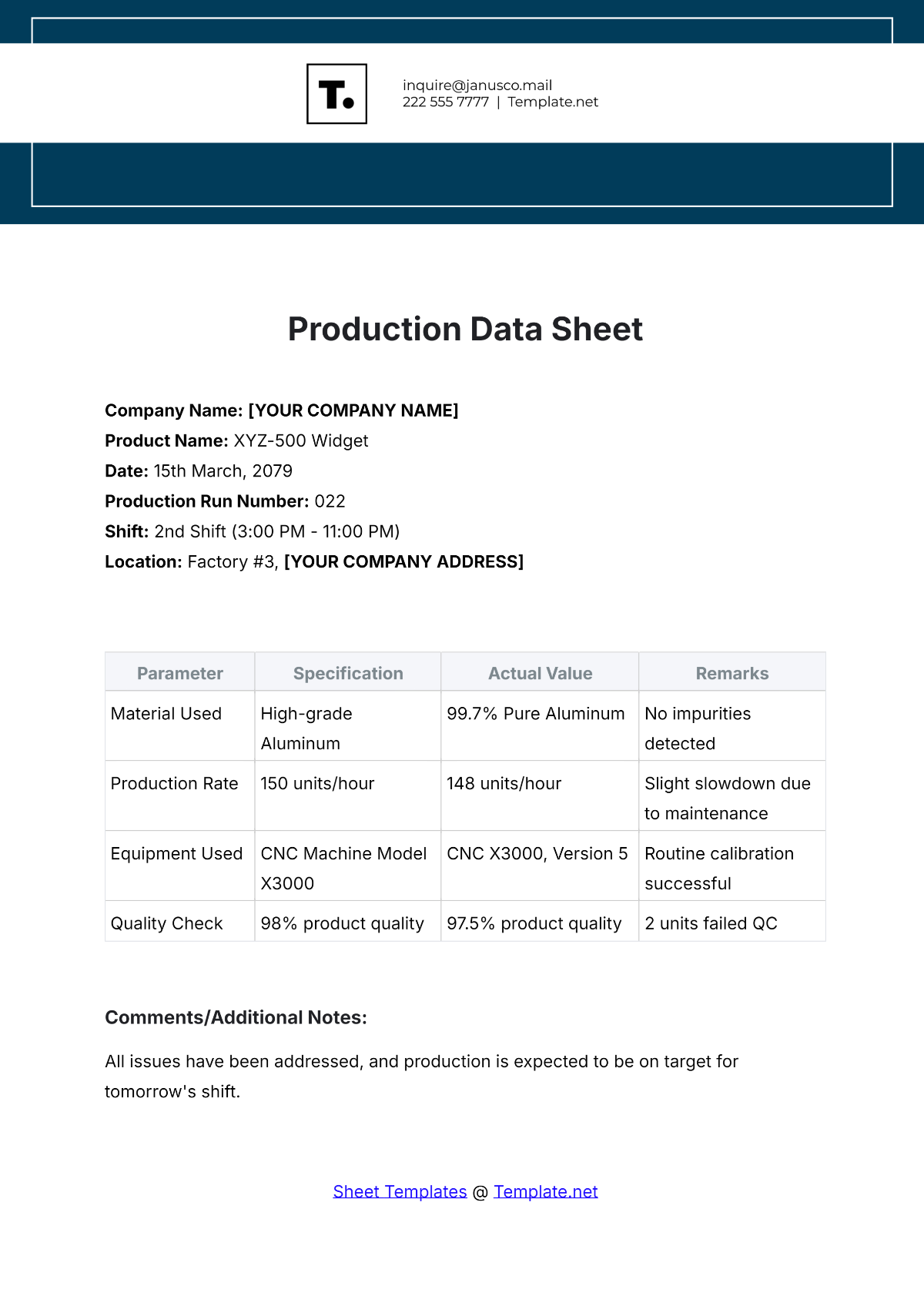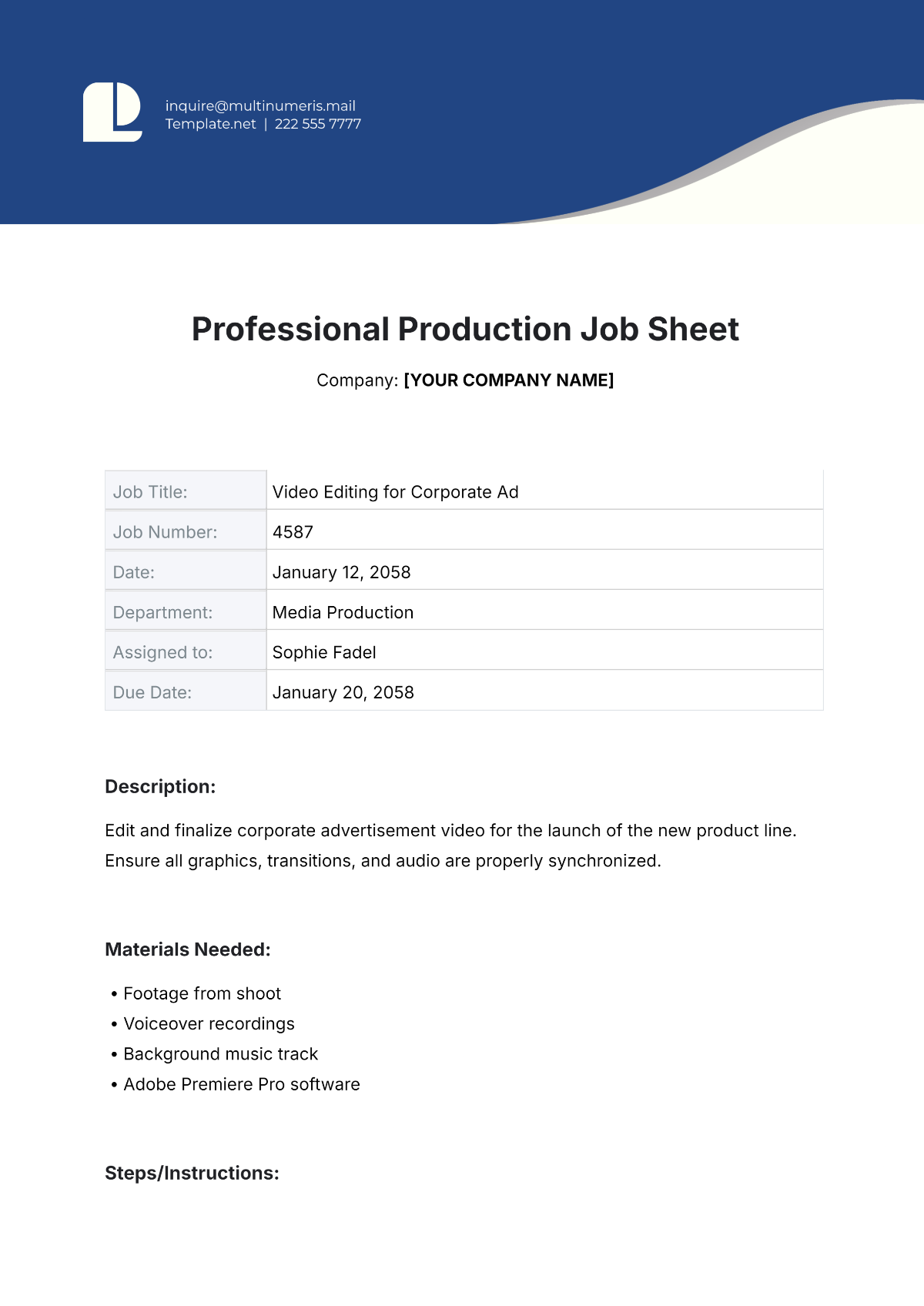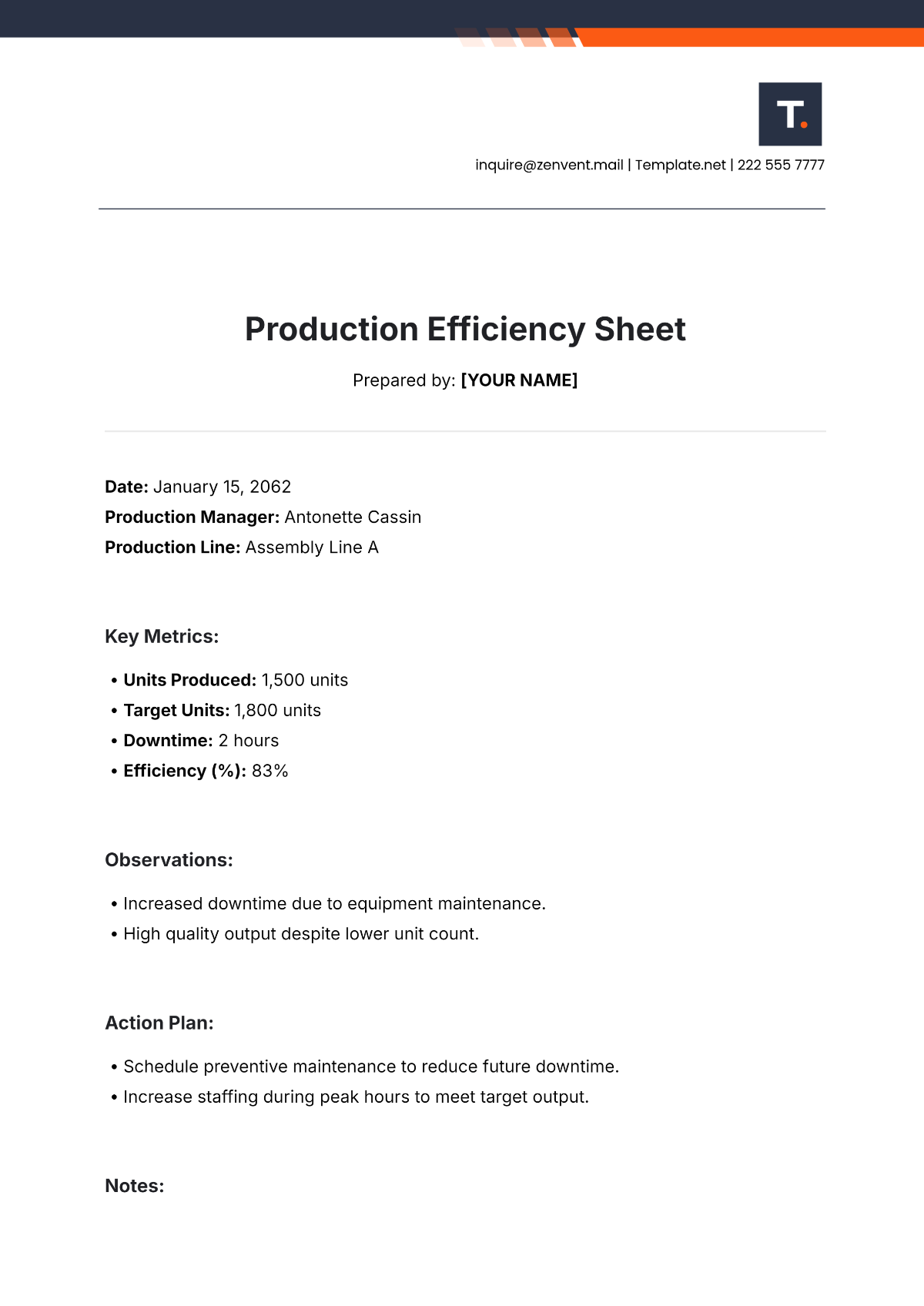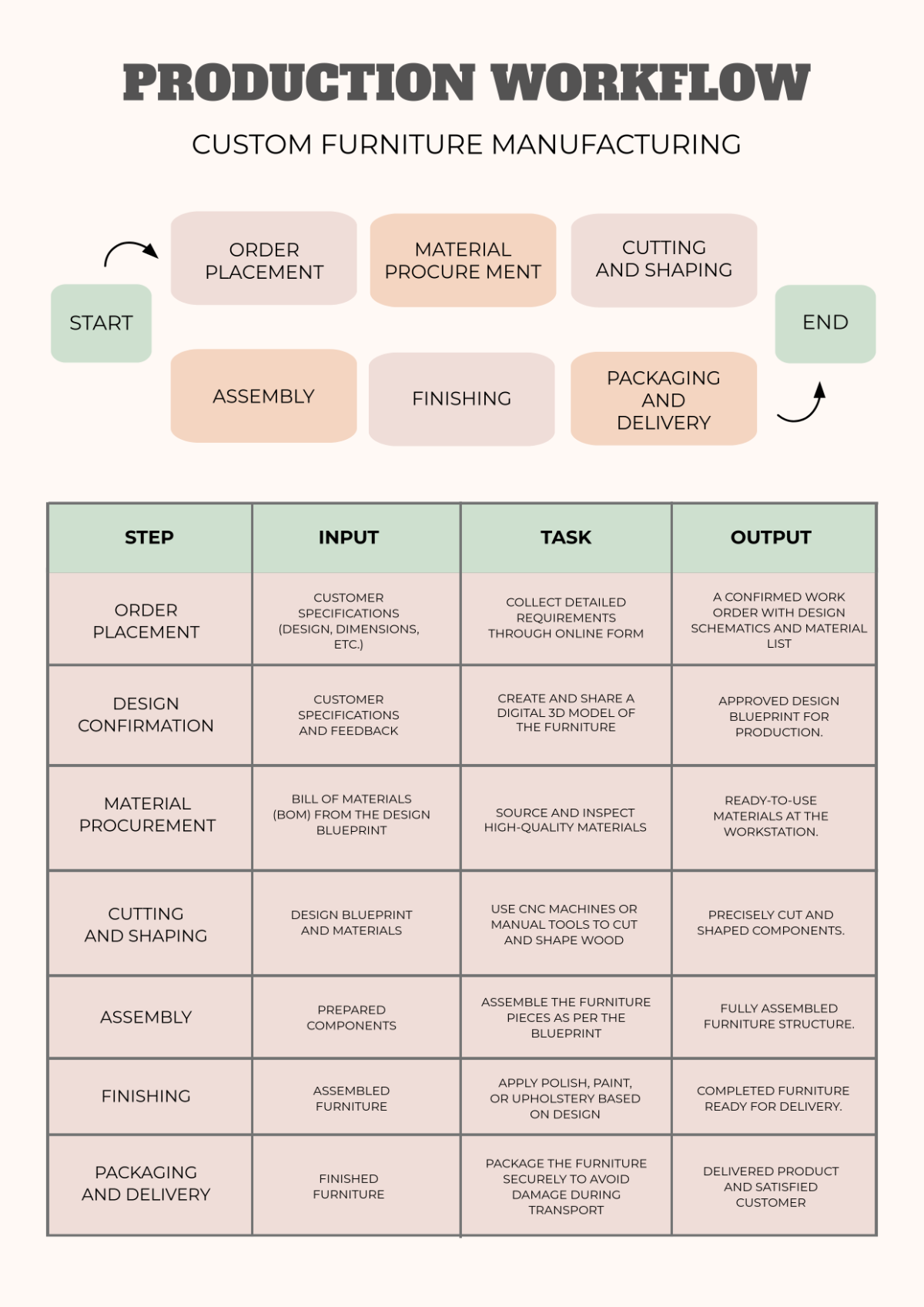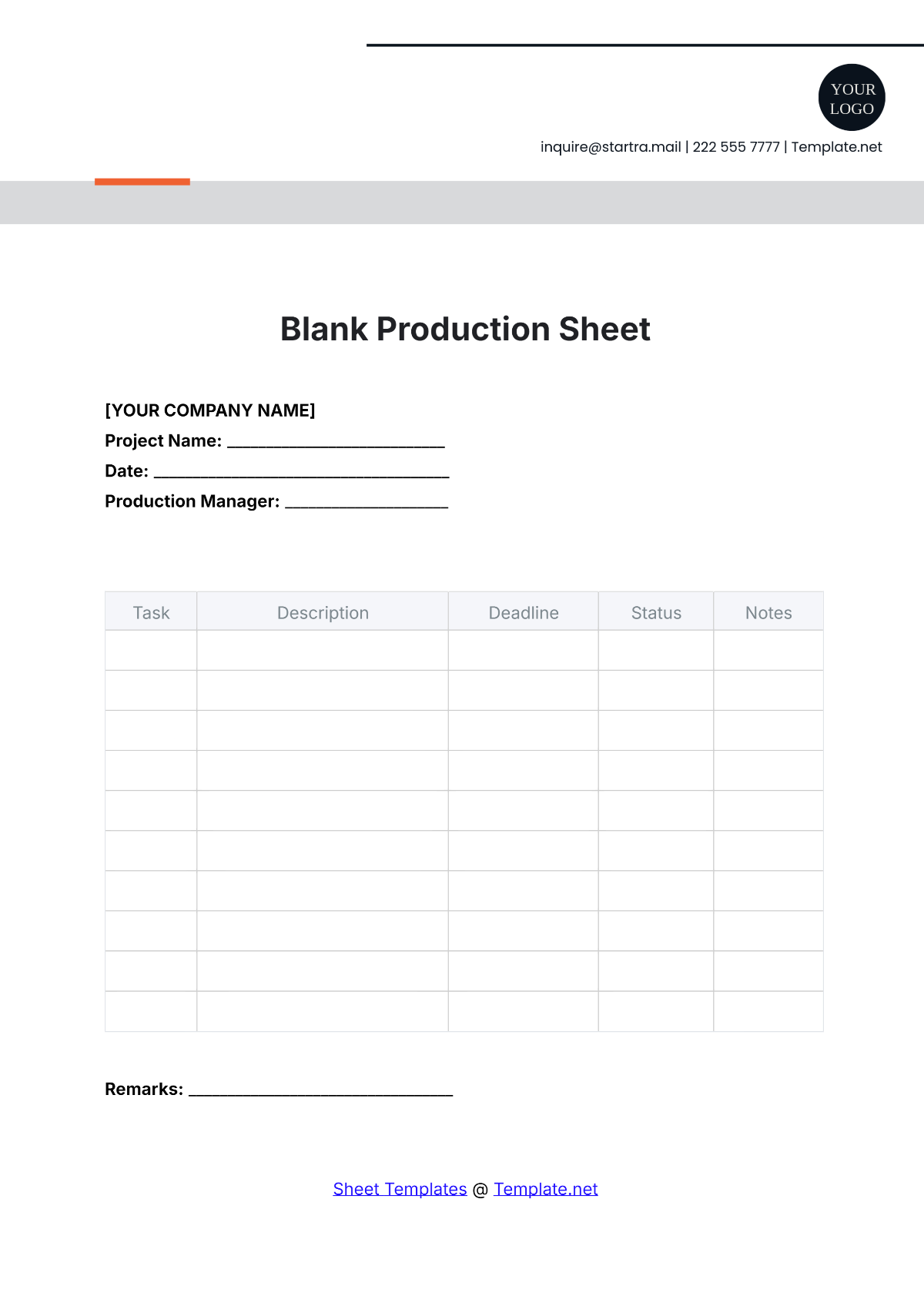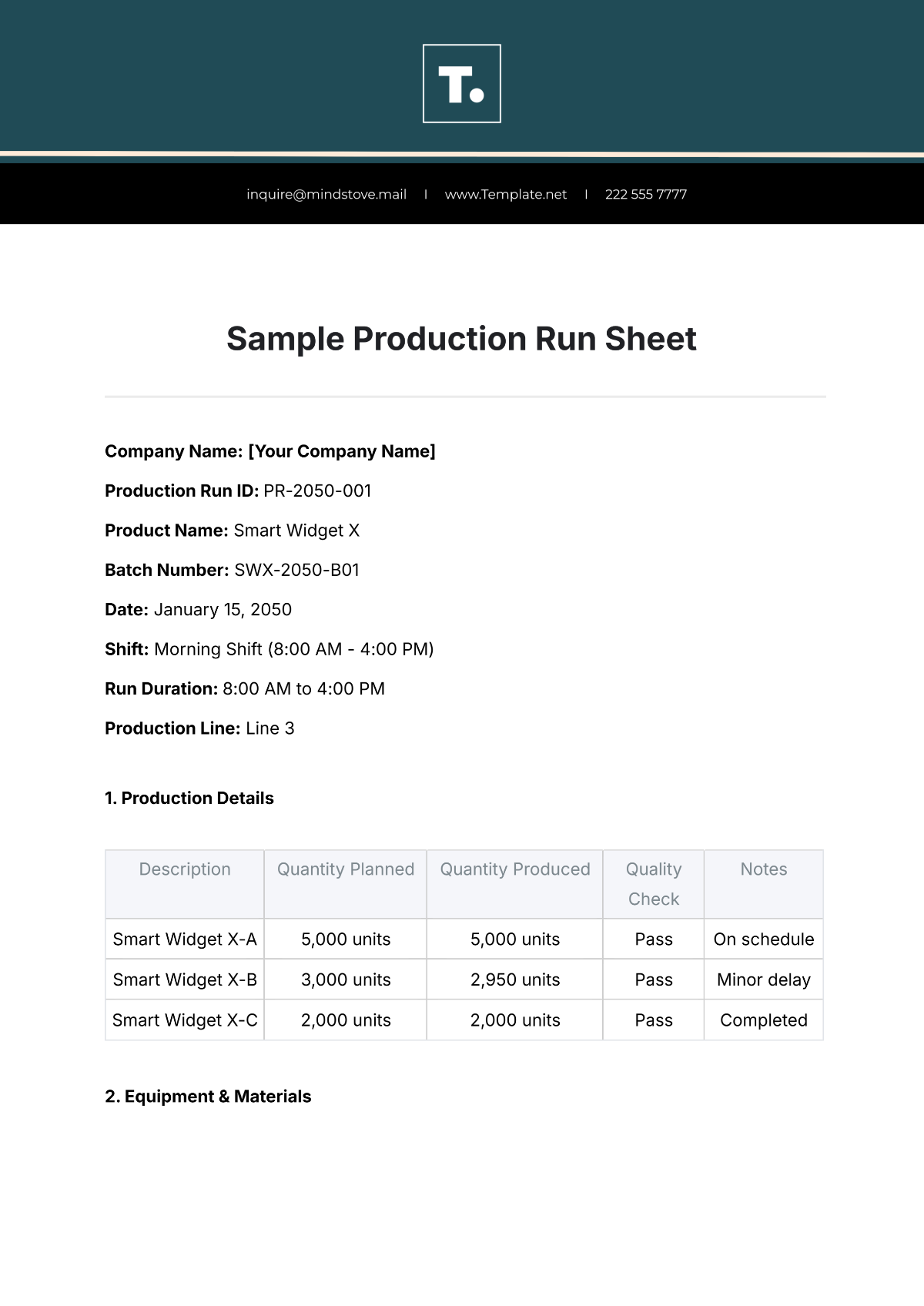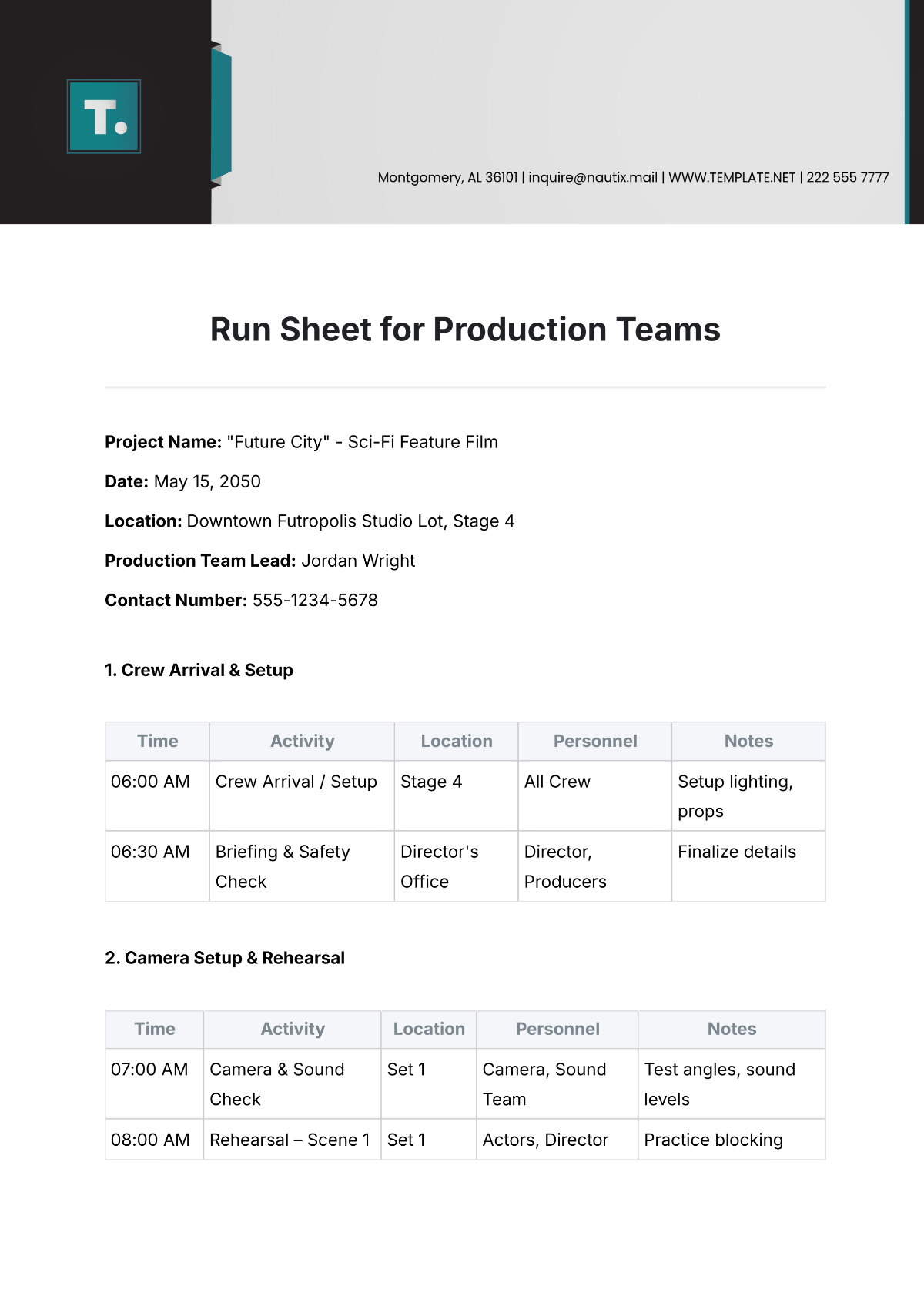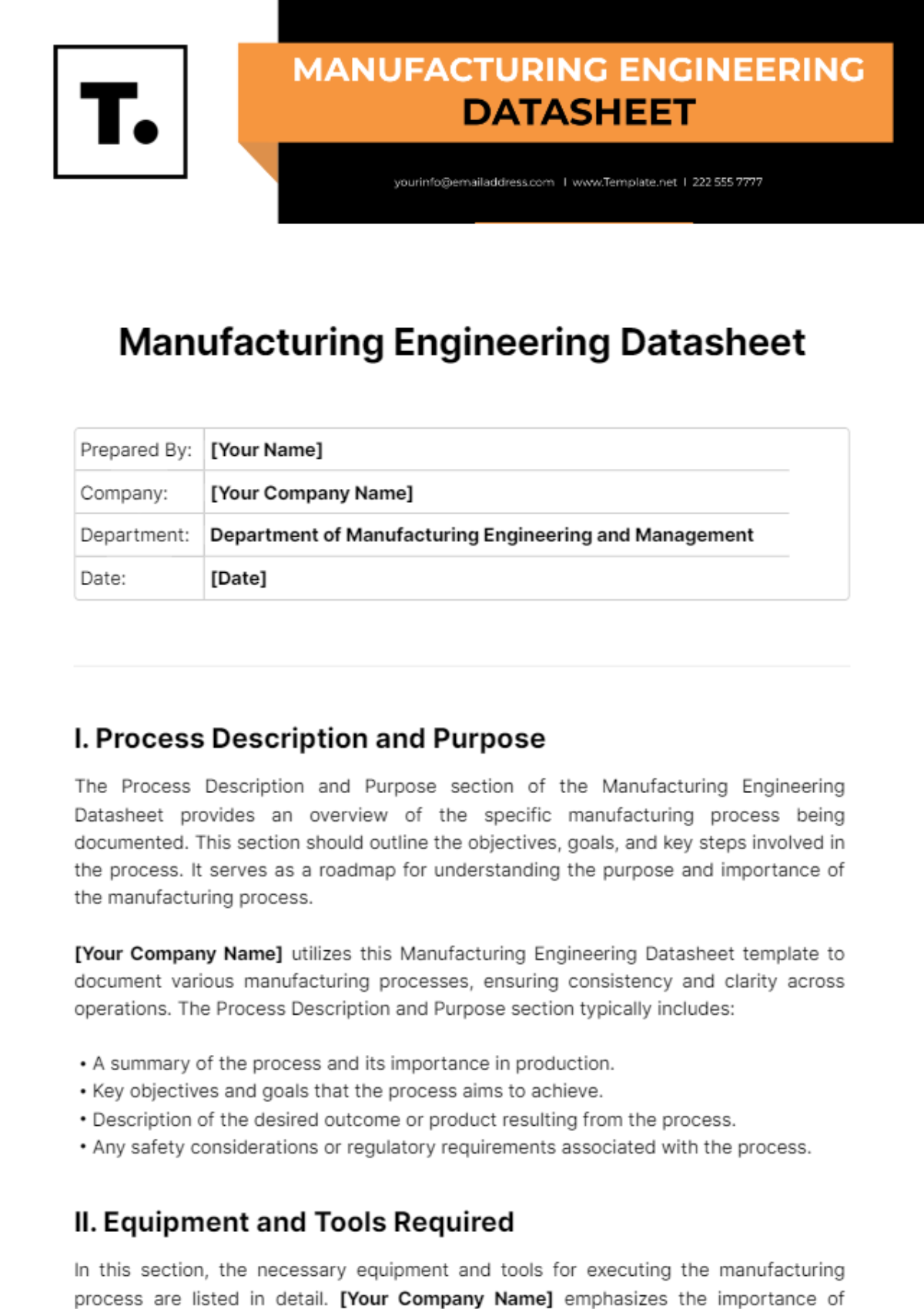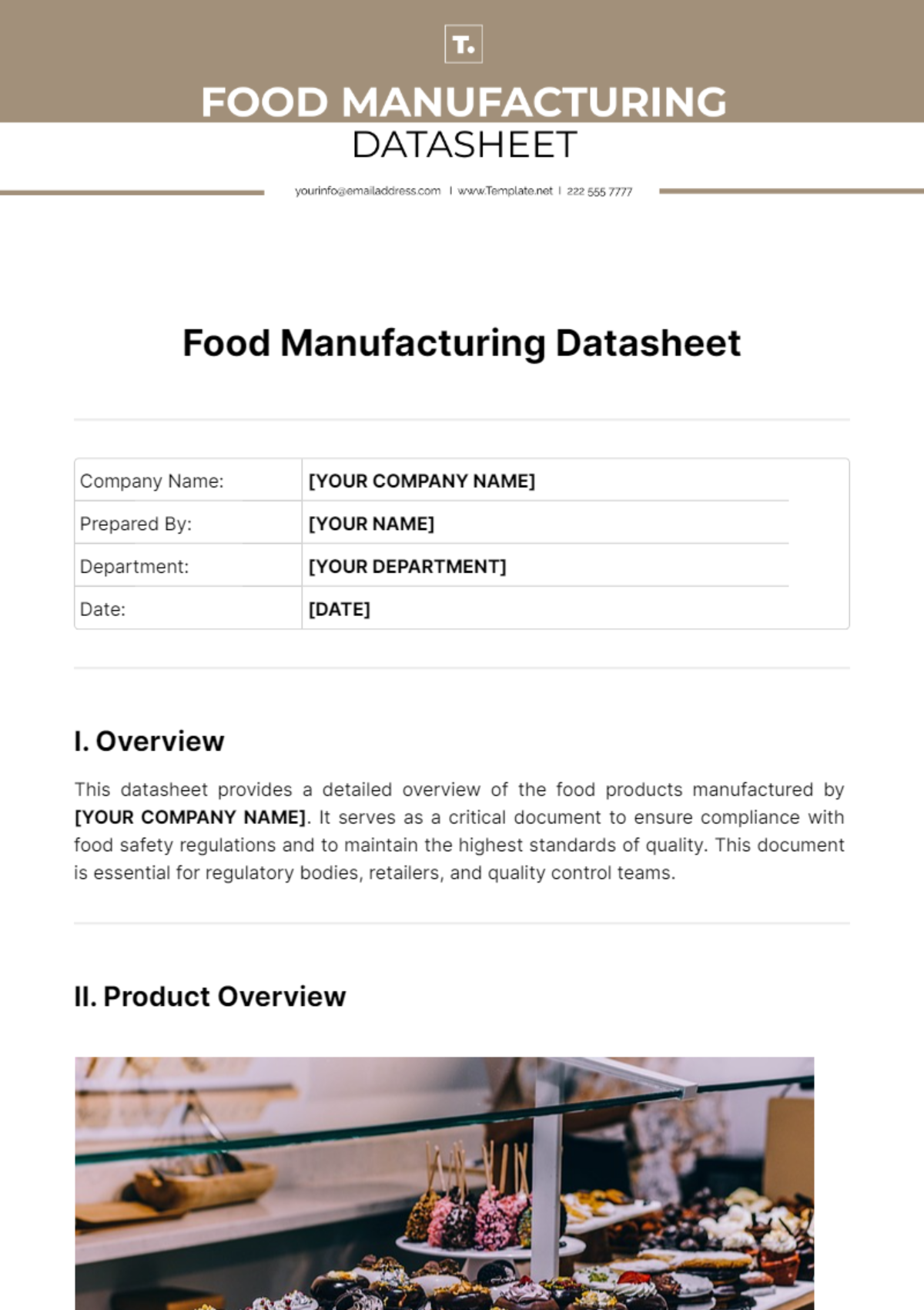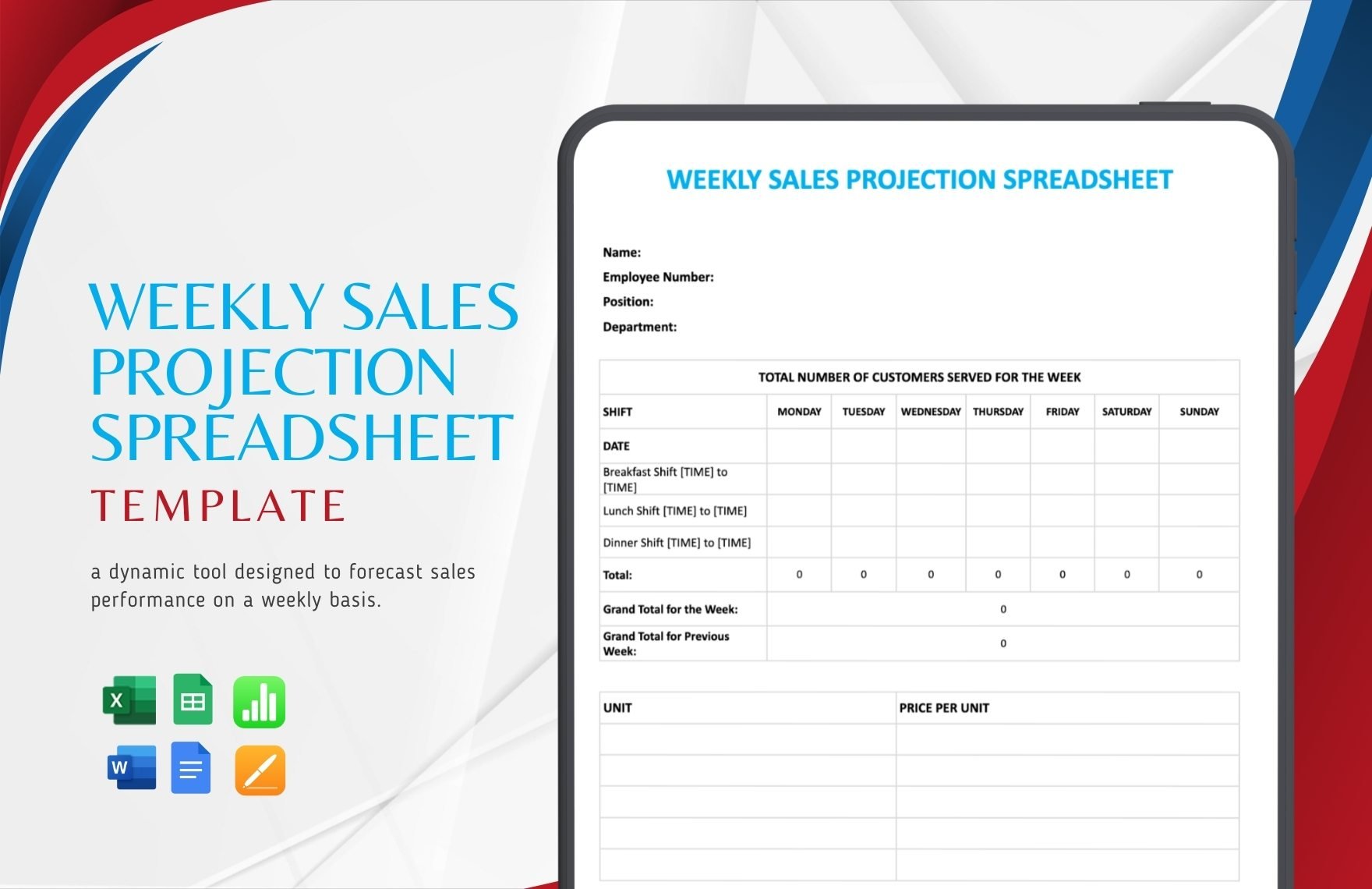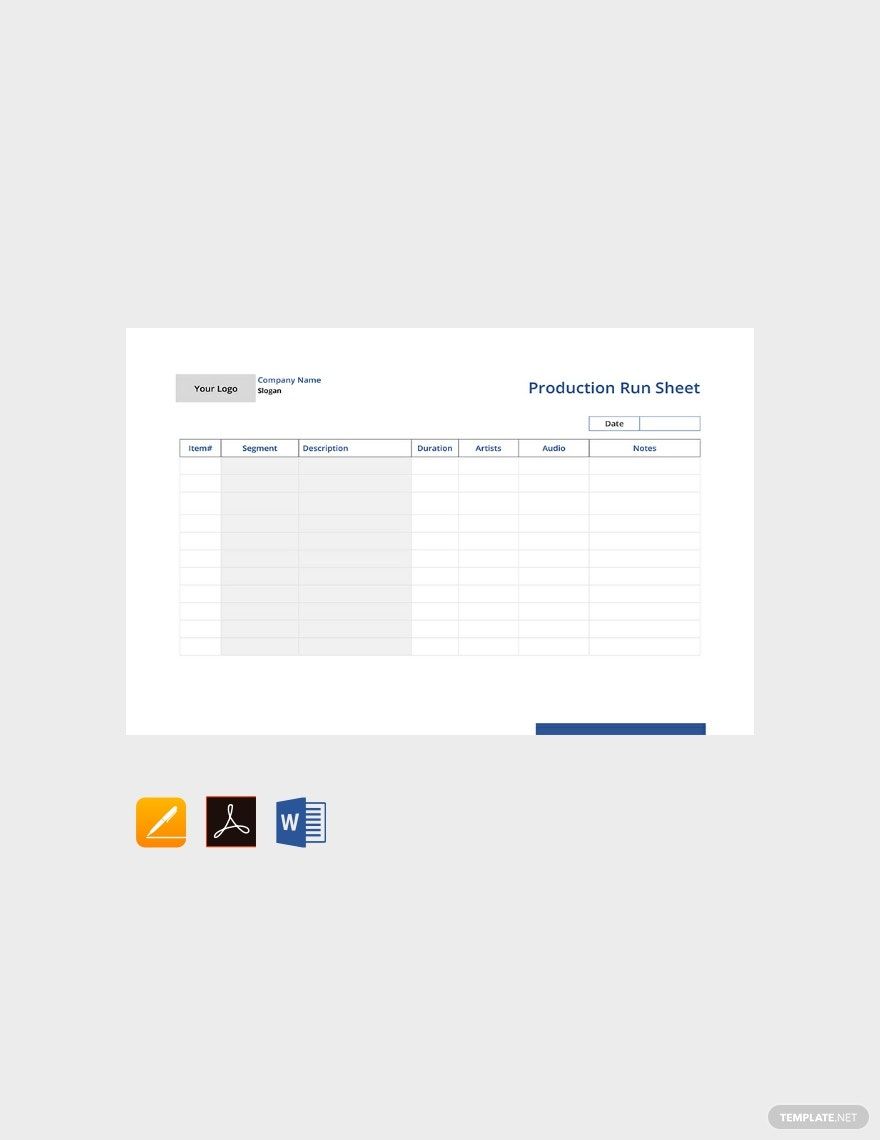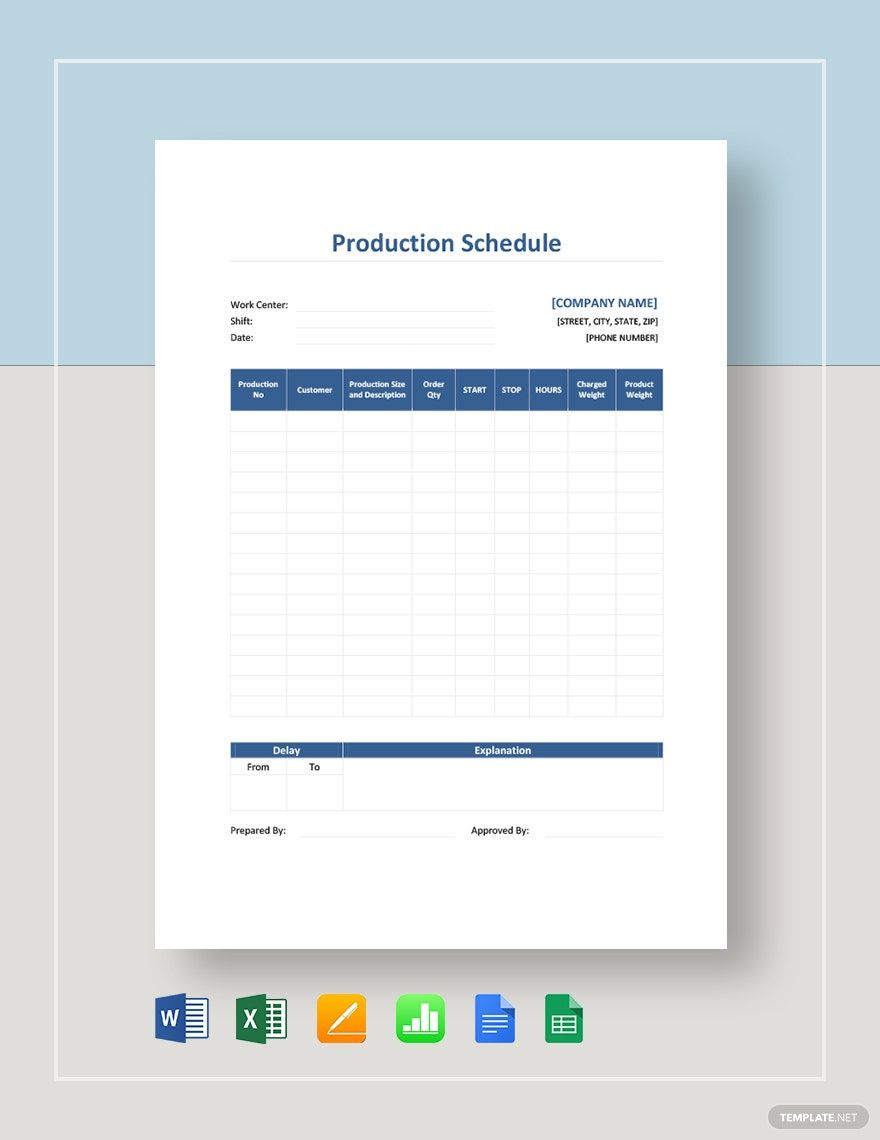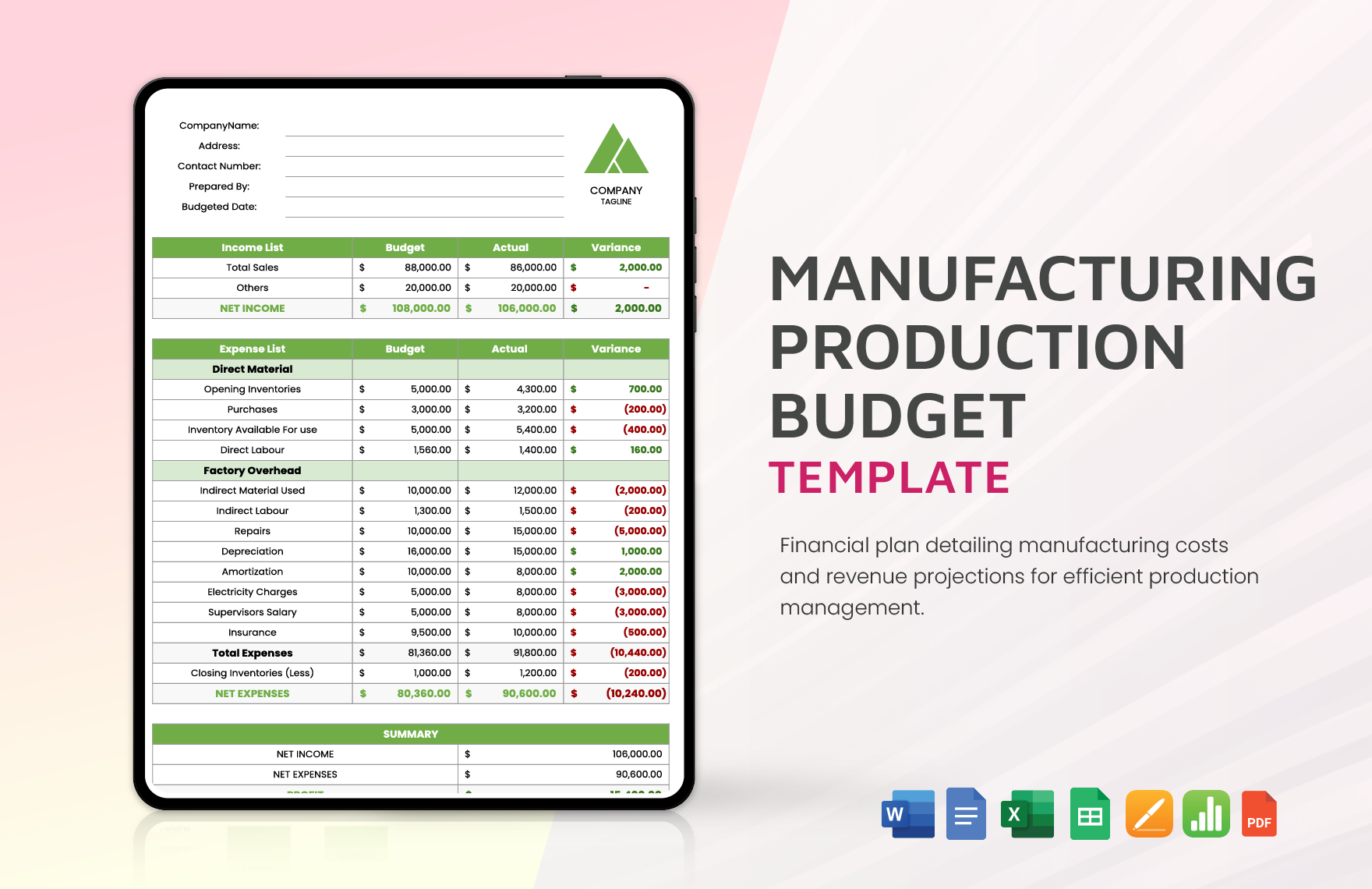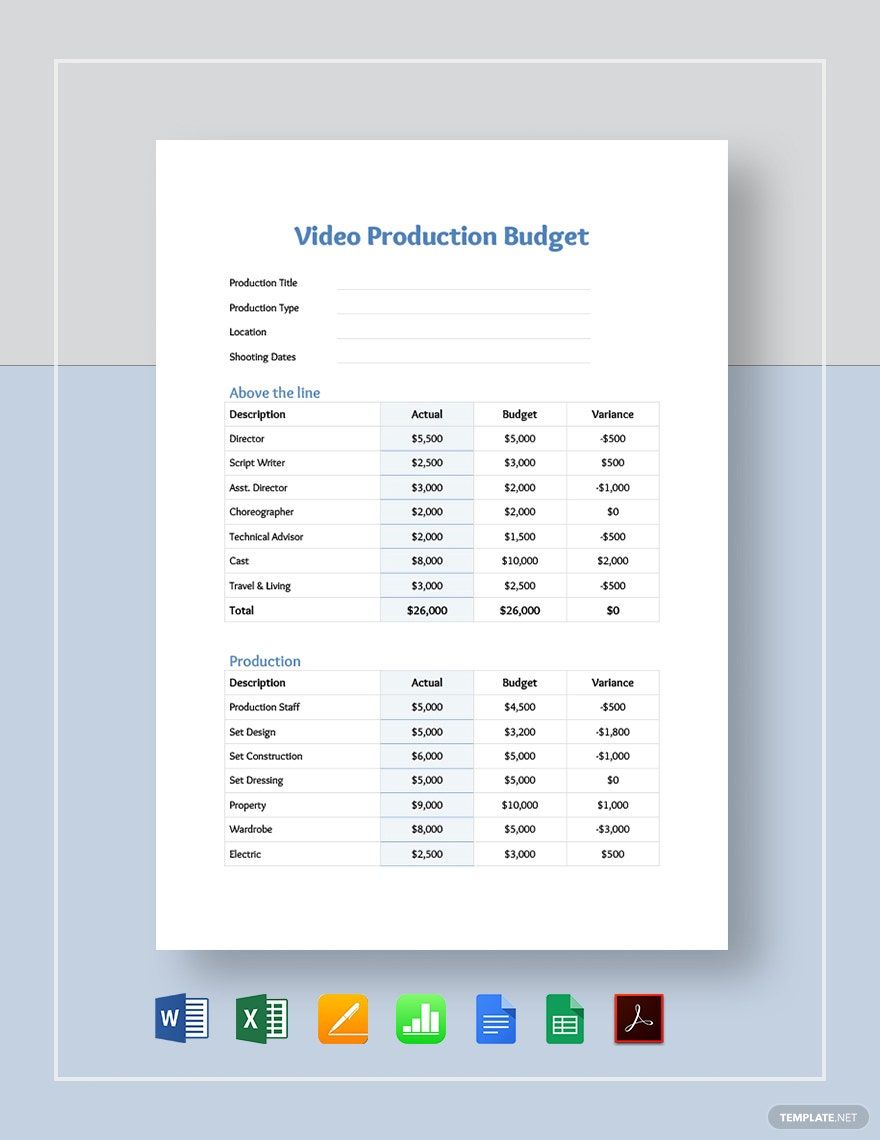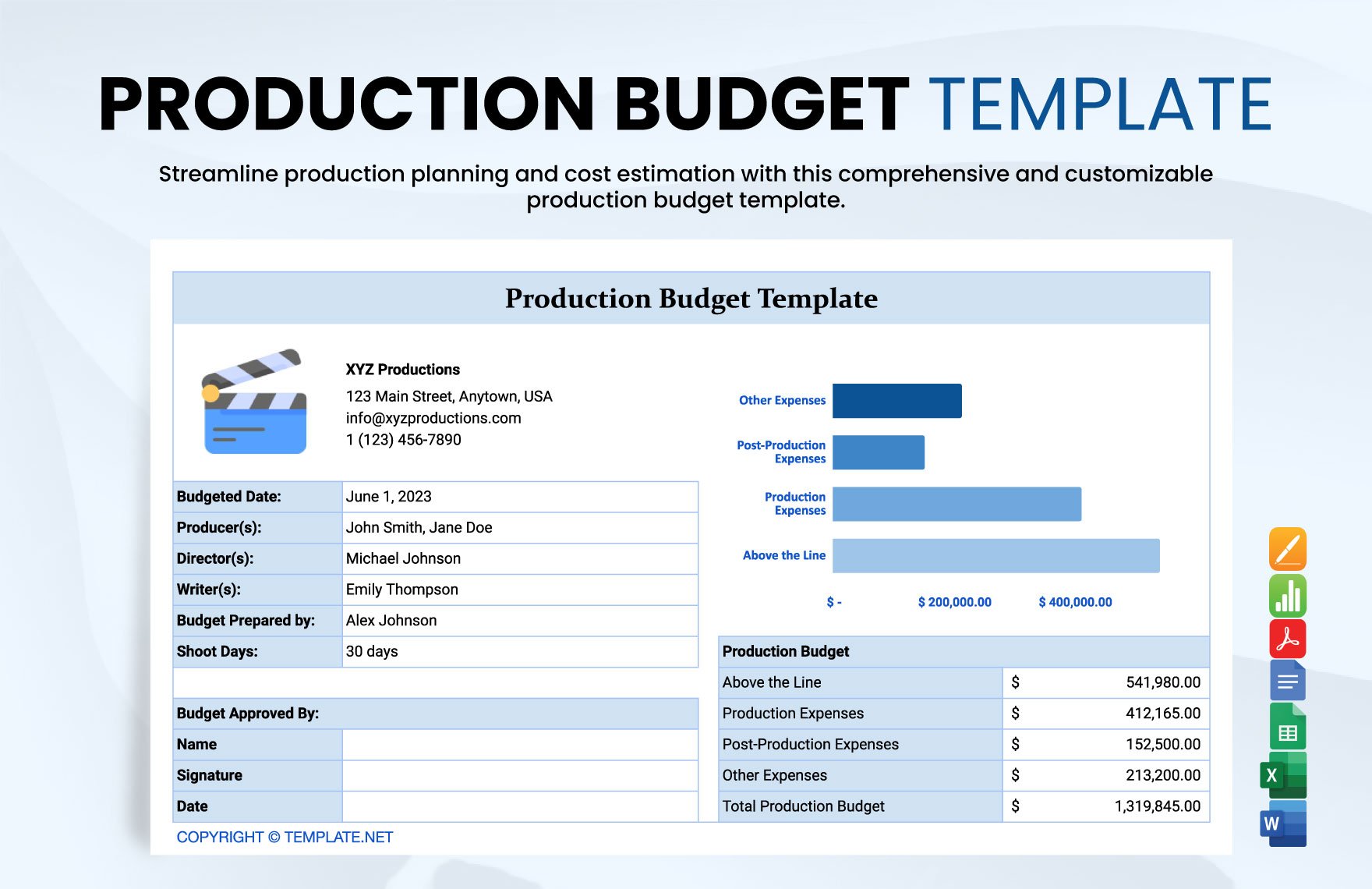Bring Your Productions to Life with Production Sheet Templates from Template.net
Keep your production team organized, enhance collaboration, and streamline your workflow with Production Sheet Templates by Template.net. Perfect for filmmakers, event planners, and content producers, these templates allow you to efficiently plan and execute your projects with ease and clarity. Whether you're promoting your latest indie film or organizing an elaborate event, our templates provide detailed layouts for scene planning, scheduling, and resource allocation. Include essential details such as time, date, and location, ensuring nothing is overlooked. Say goodbye to complex design software—our professional-grade, fully customizable production sheets require no graphic design skills and offer a look both sleek and professional. Customize for digital or print and distribute them across all social media, email, and print channels seamlessly.
Discover the many production sheet templates we have on hand at Template.net. Begin by selecting a layout that suits your project needs, effortlessly swapping in your assets and tweaking colors and fonts to match your brand identity. Enhance your templates with easy-to-use features like drag-and-drop icons, graphics, and even AI-powered text tools for that extra creative touch. With a world of possibilities open to you and no skill barriers, creating engaging and polished production documents is fun and user-friendly. Our library is regularly updated with fresh designs to keep you ahead of the production game. Once you've created your masterpiece, download or share your sheets with collaborators instantly via links, print, or email, ensuring your team stays connected and informed.
